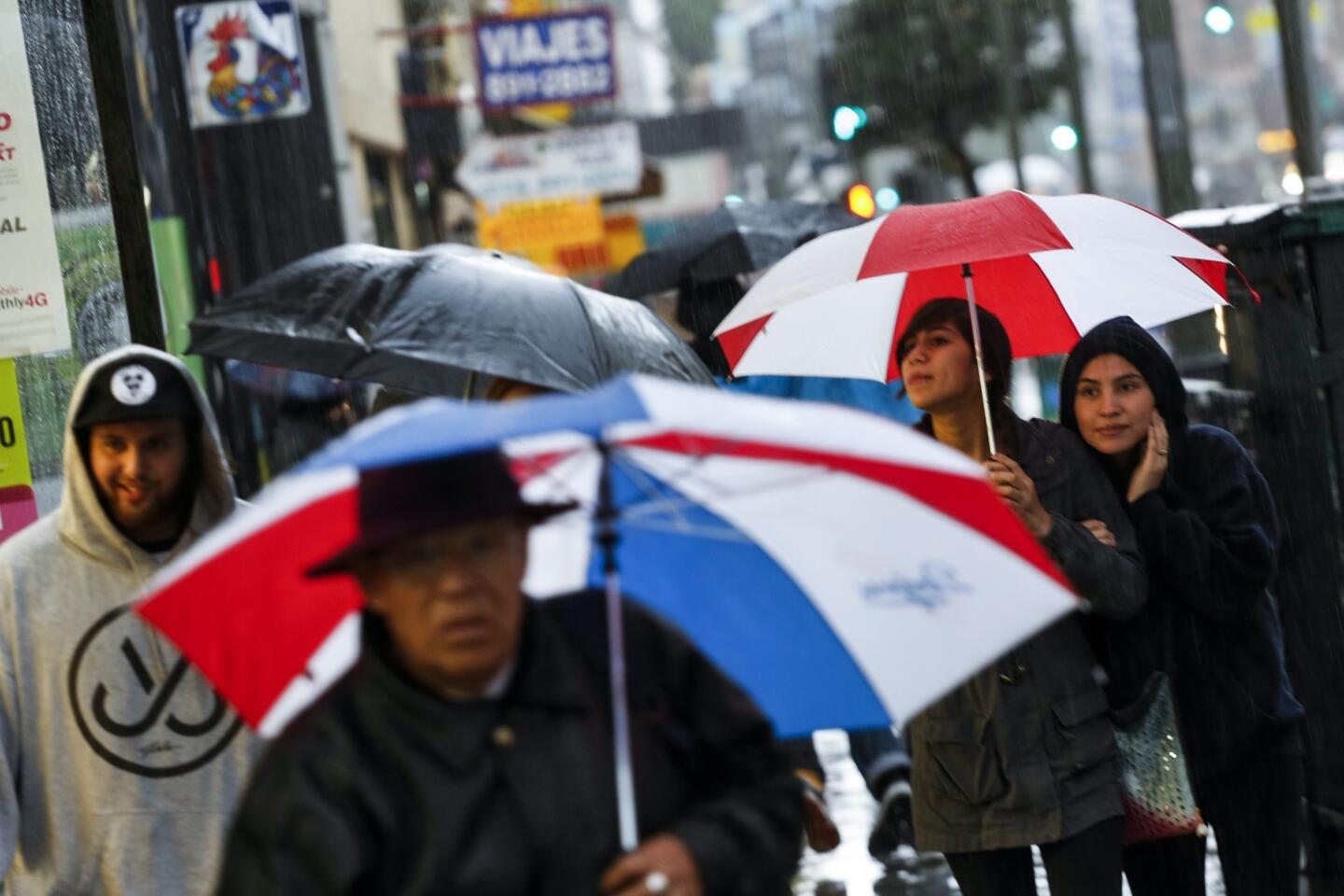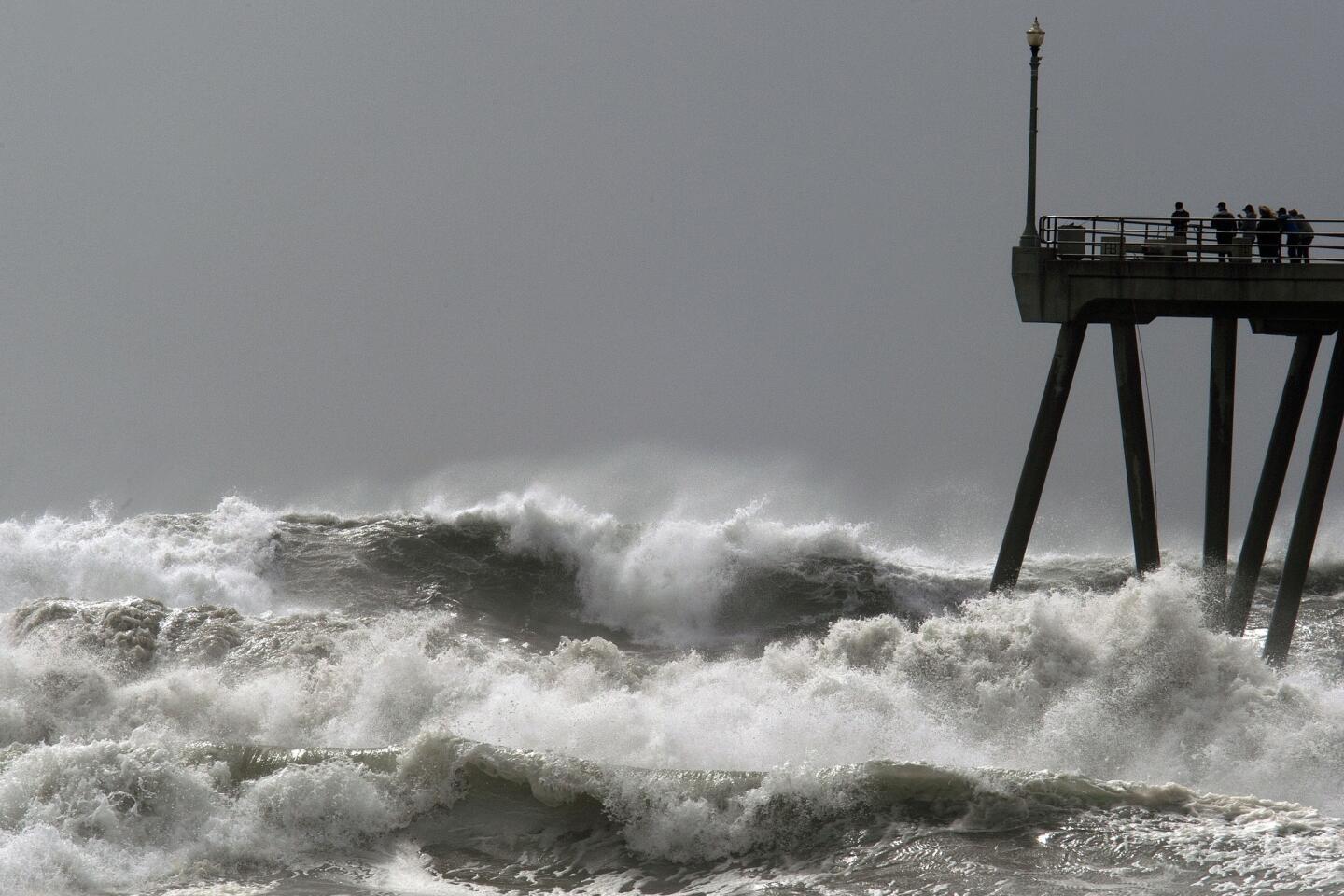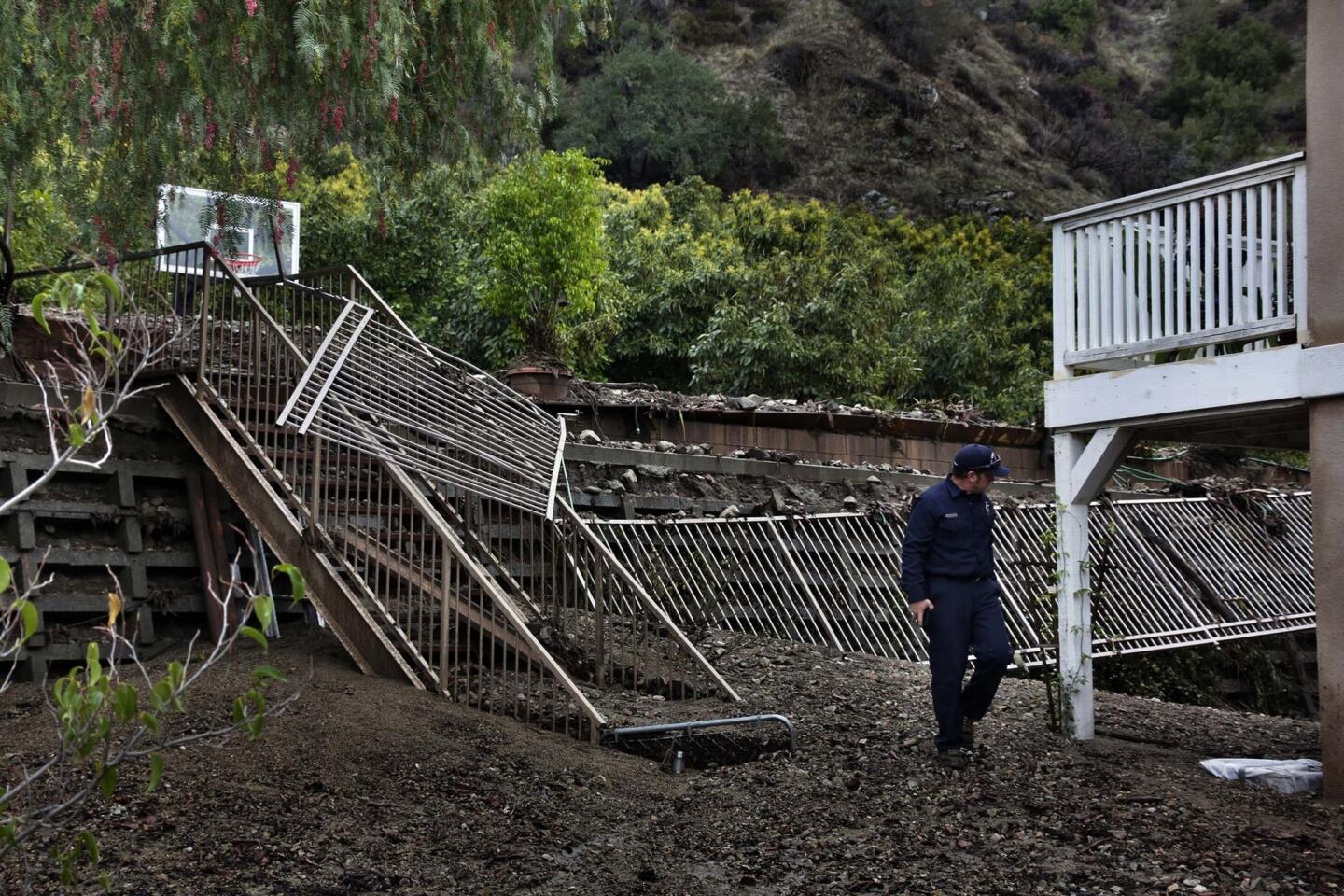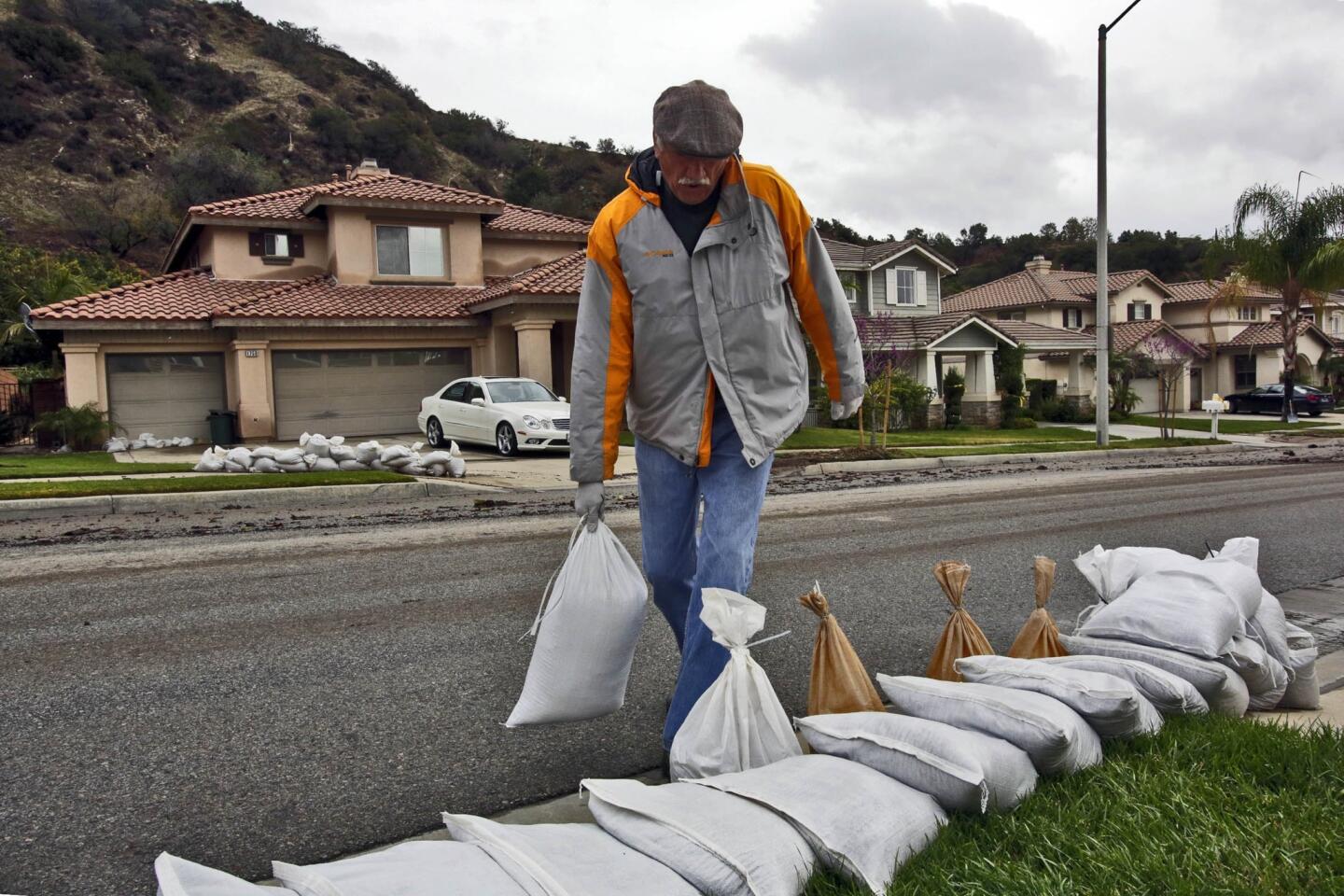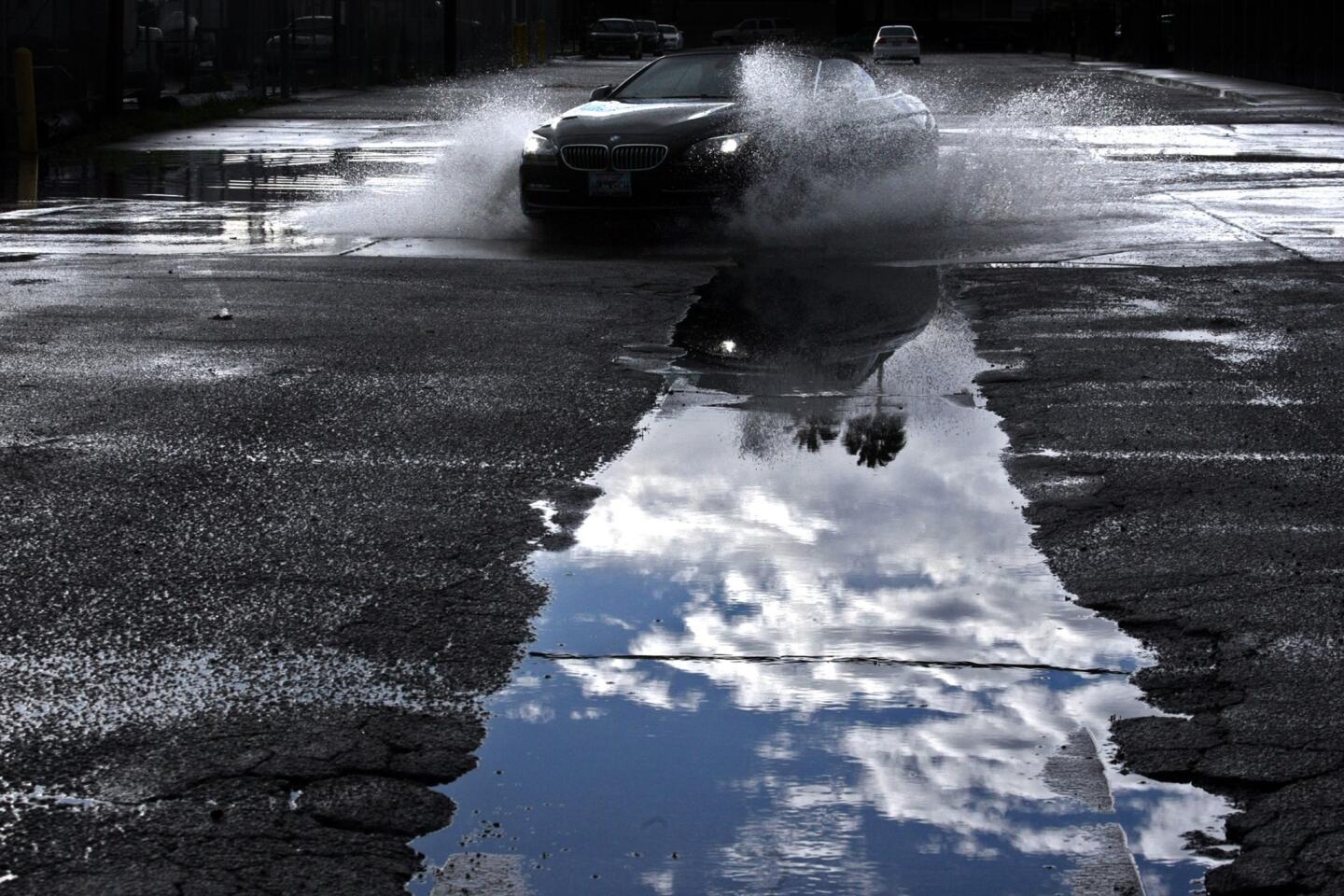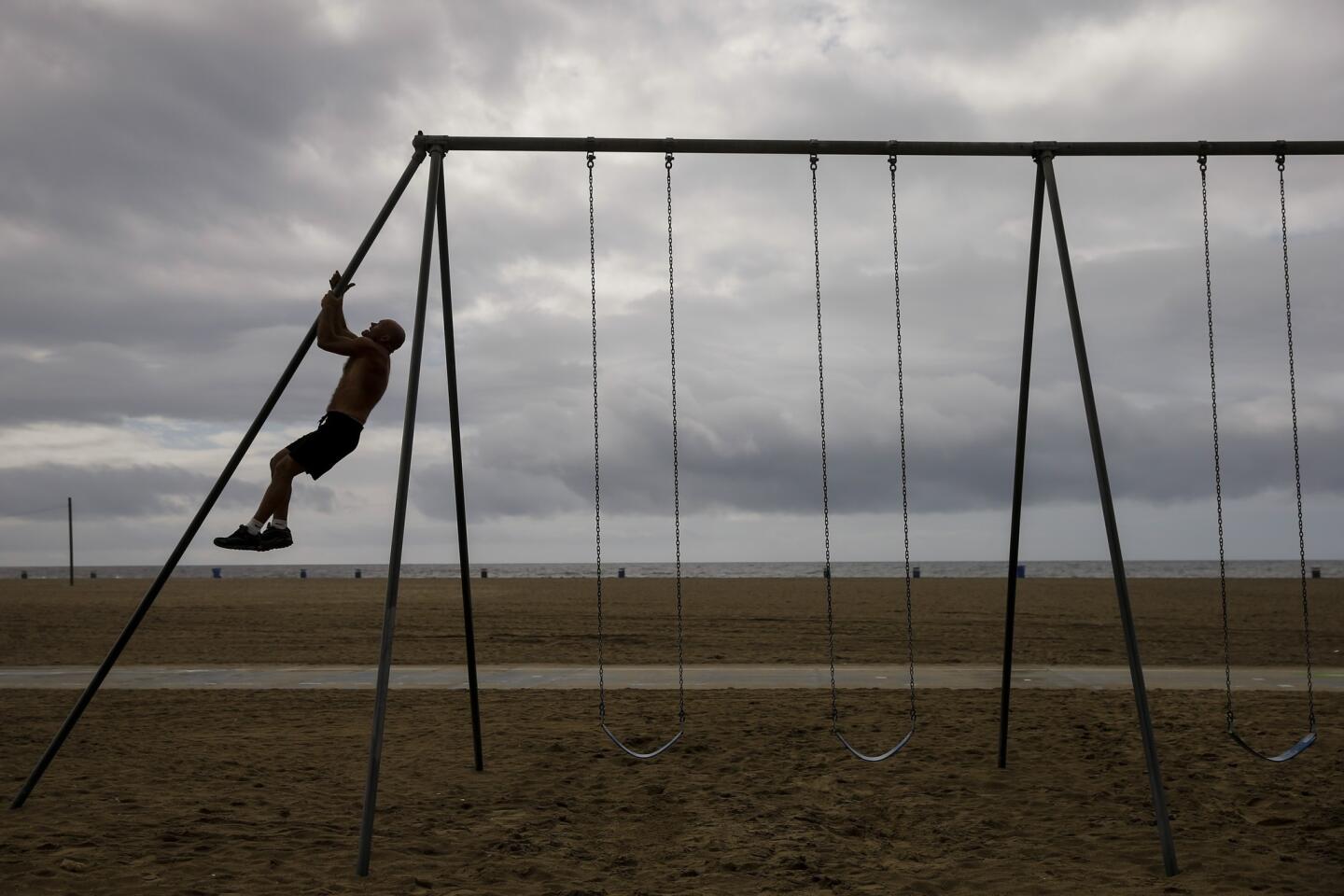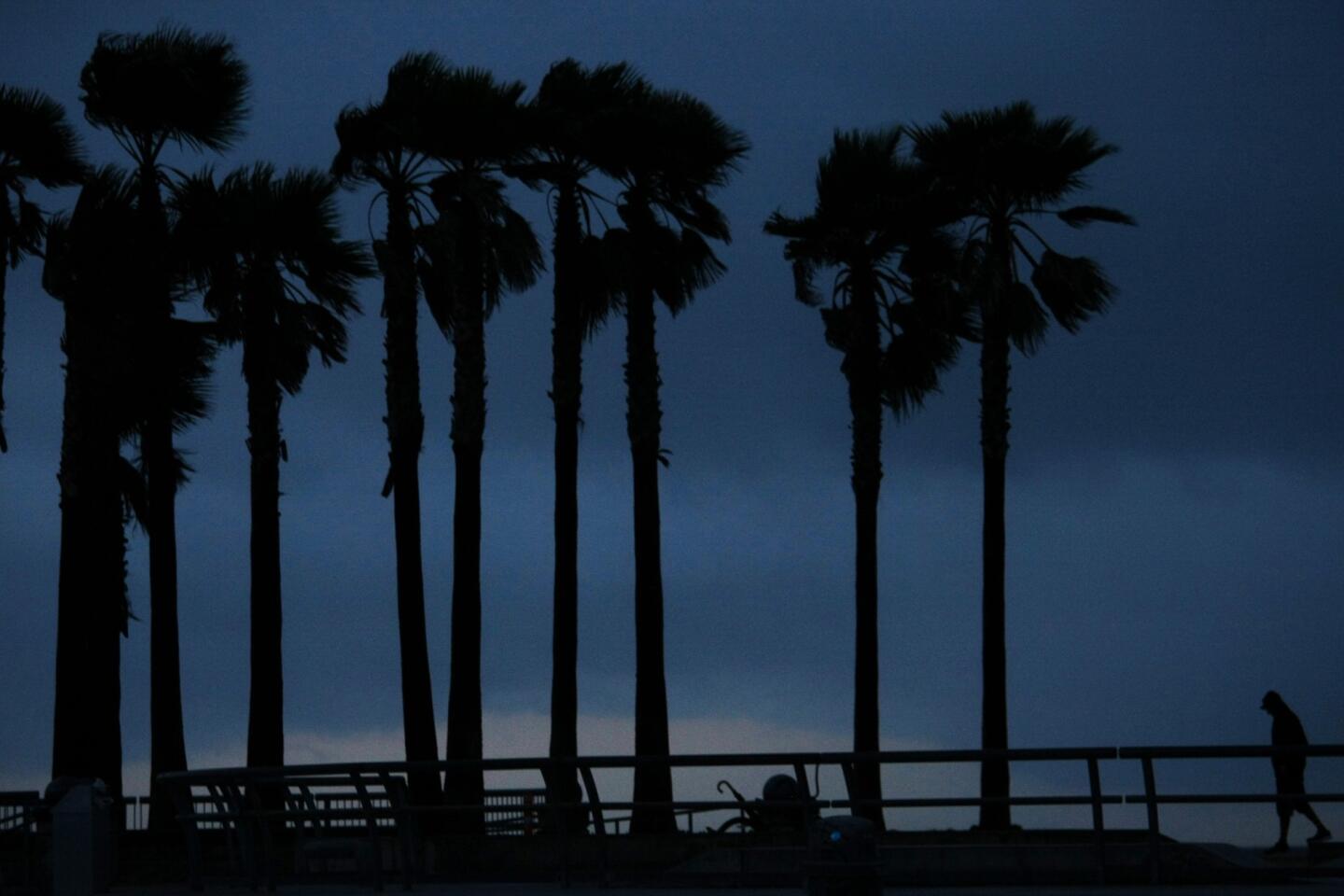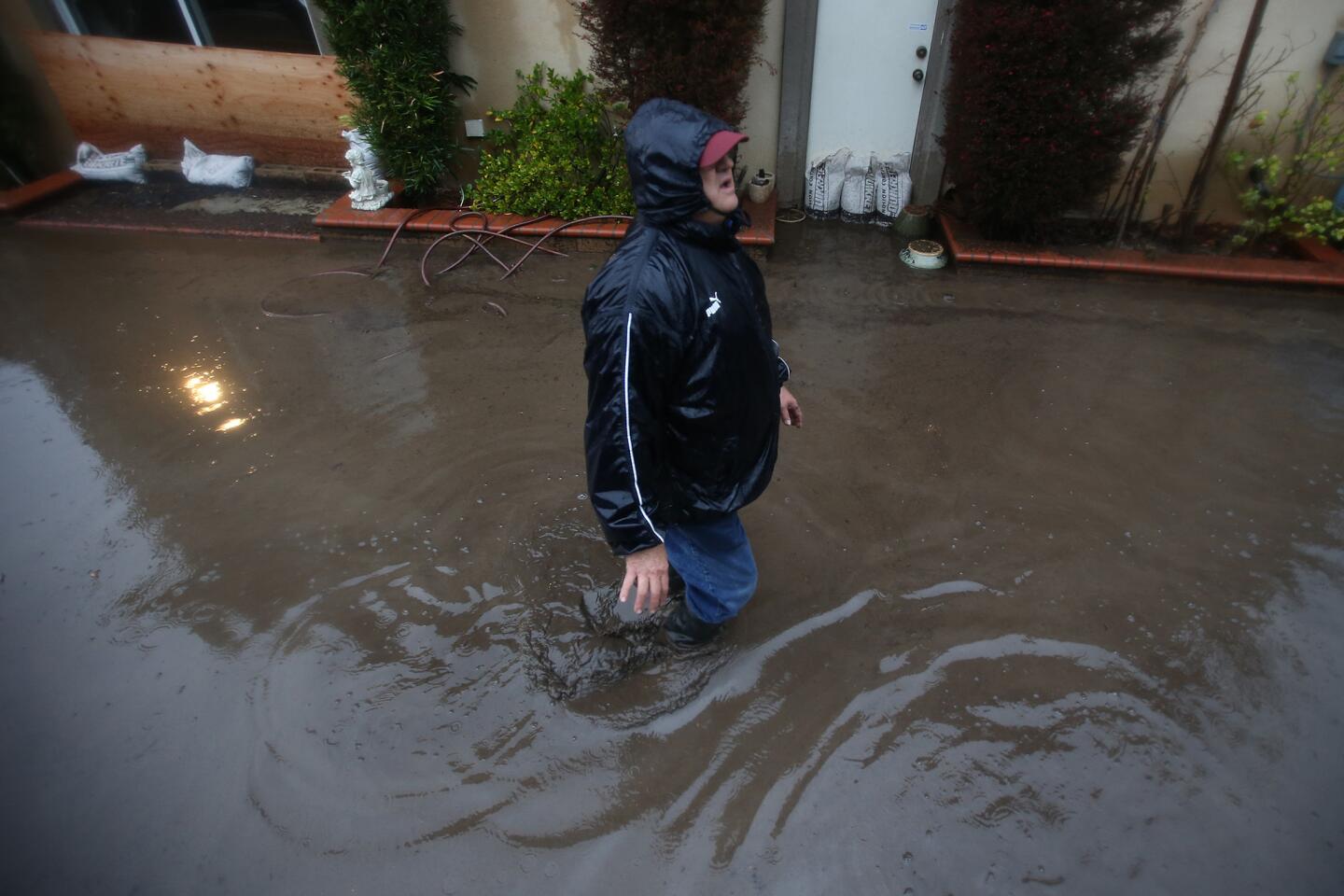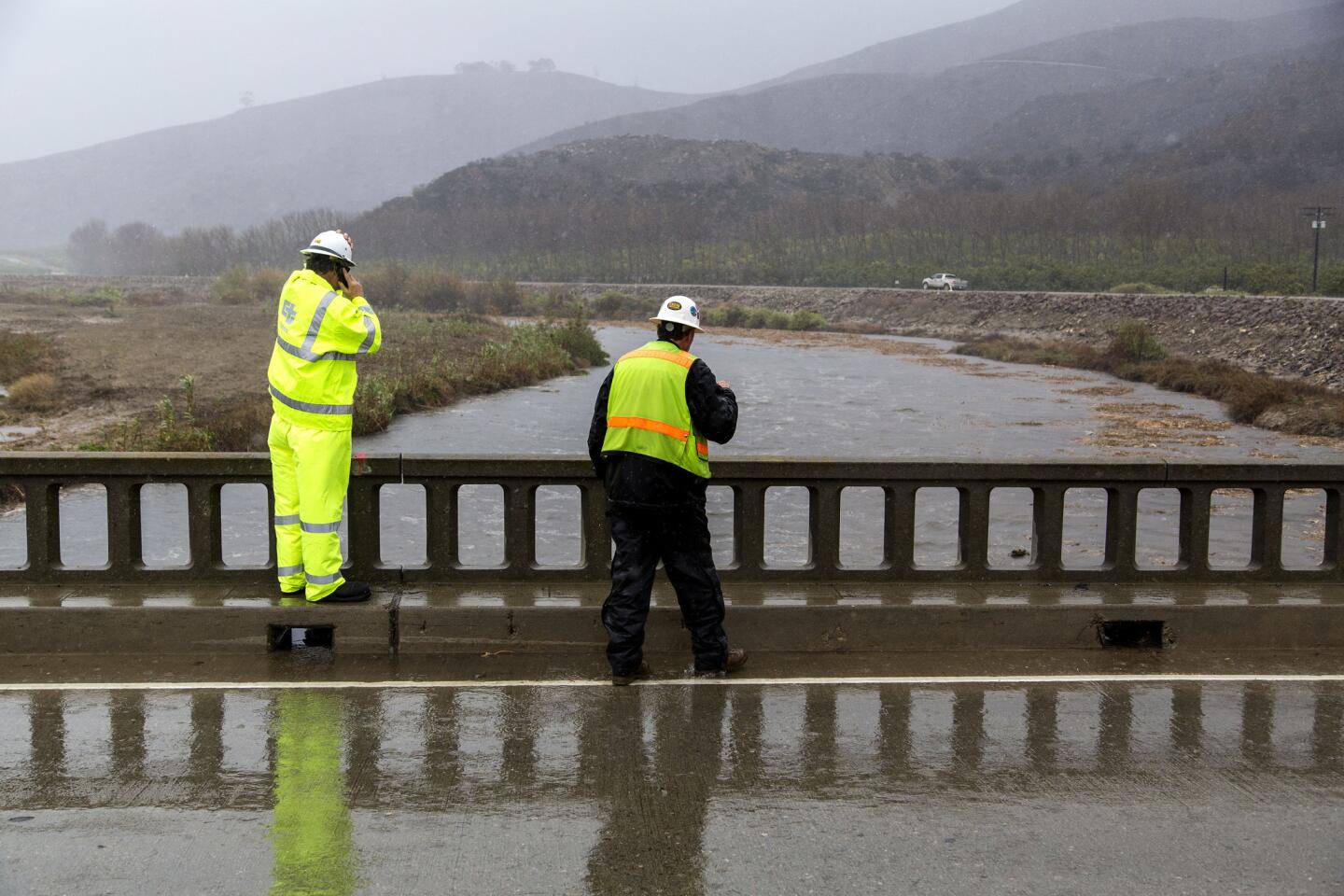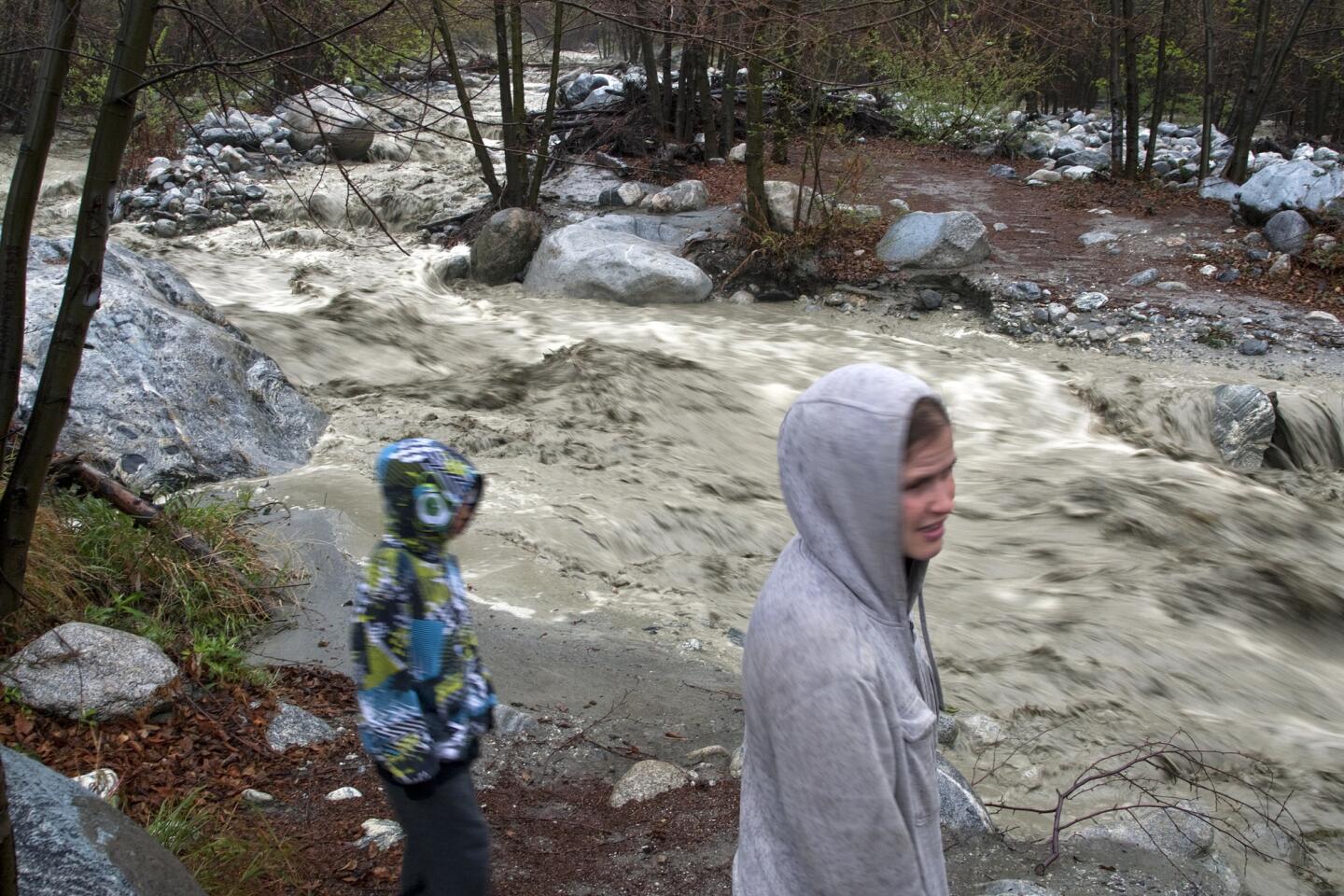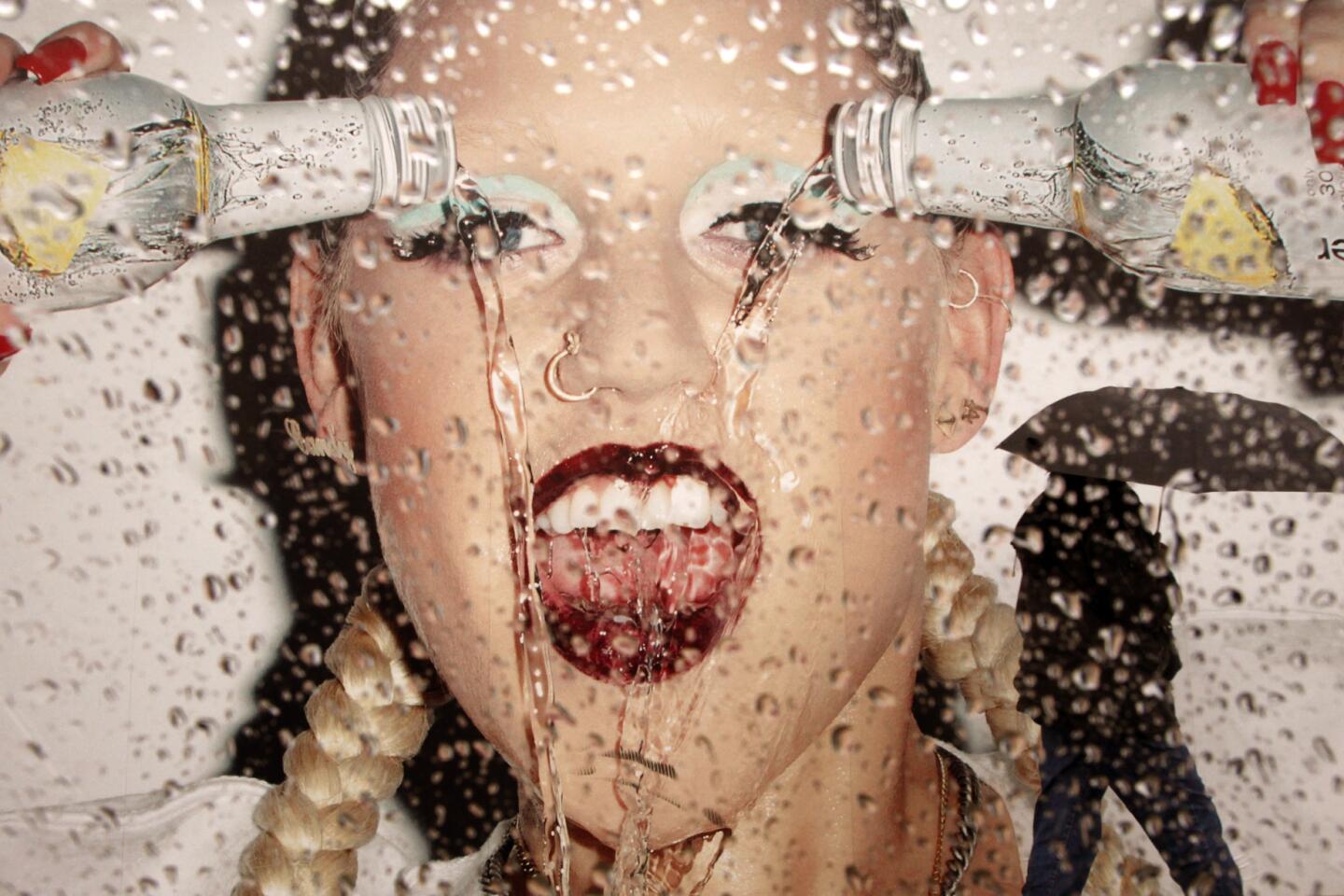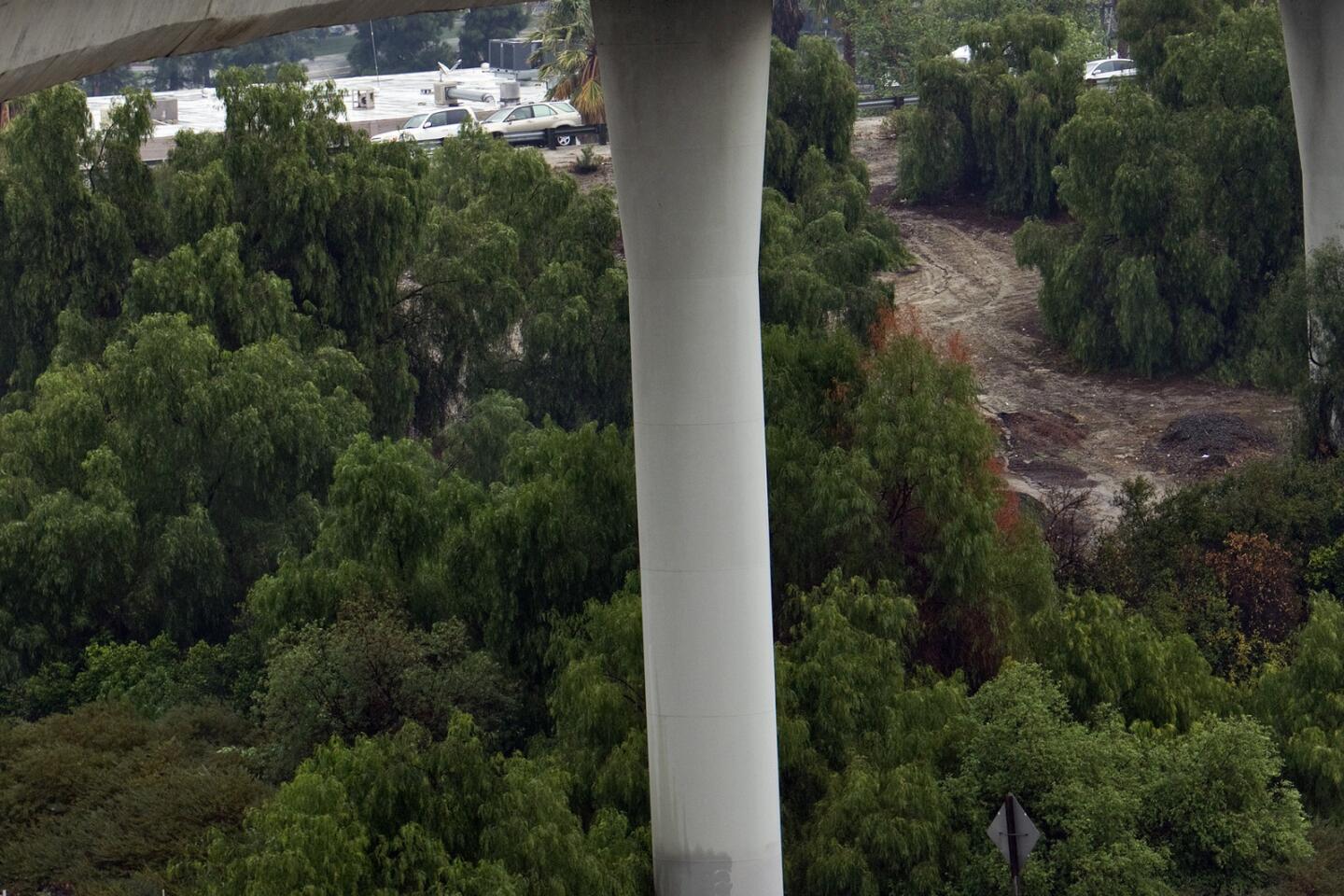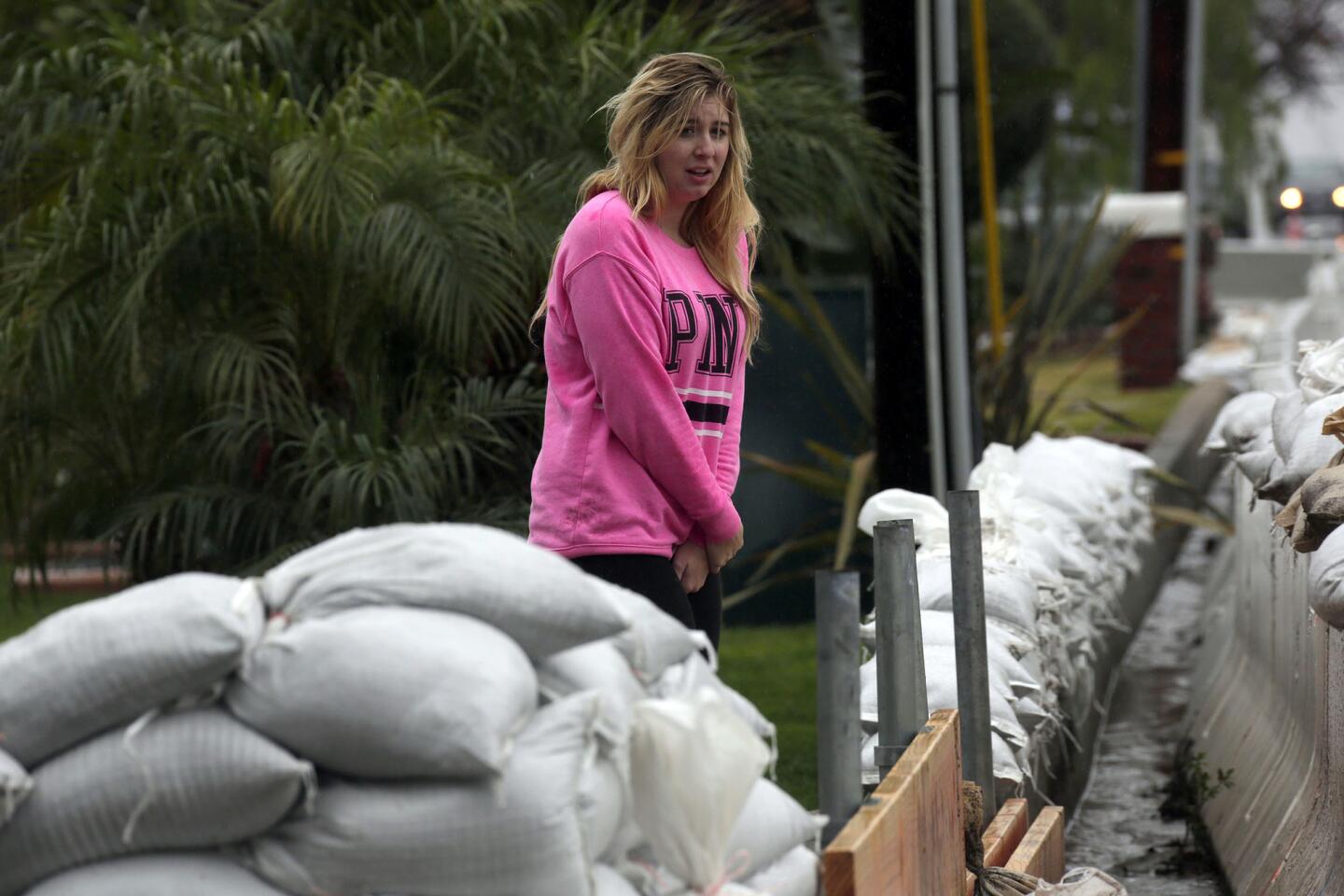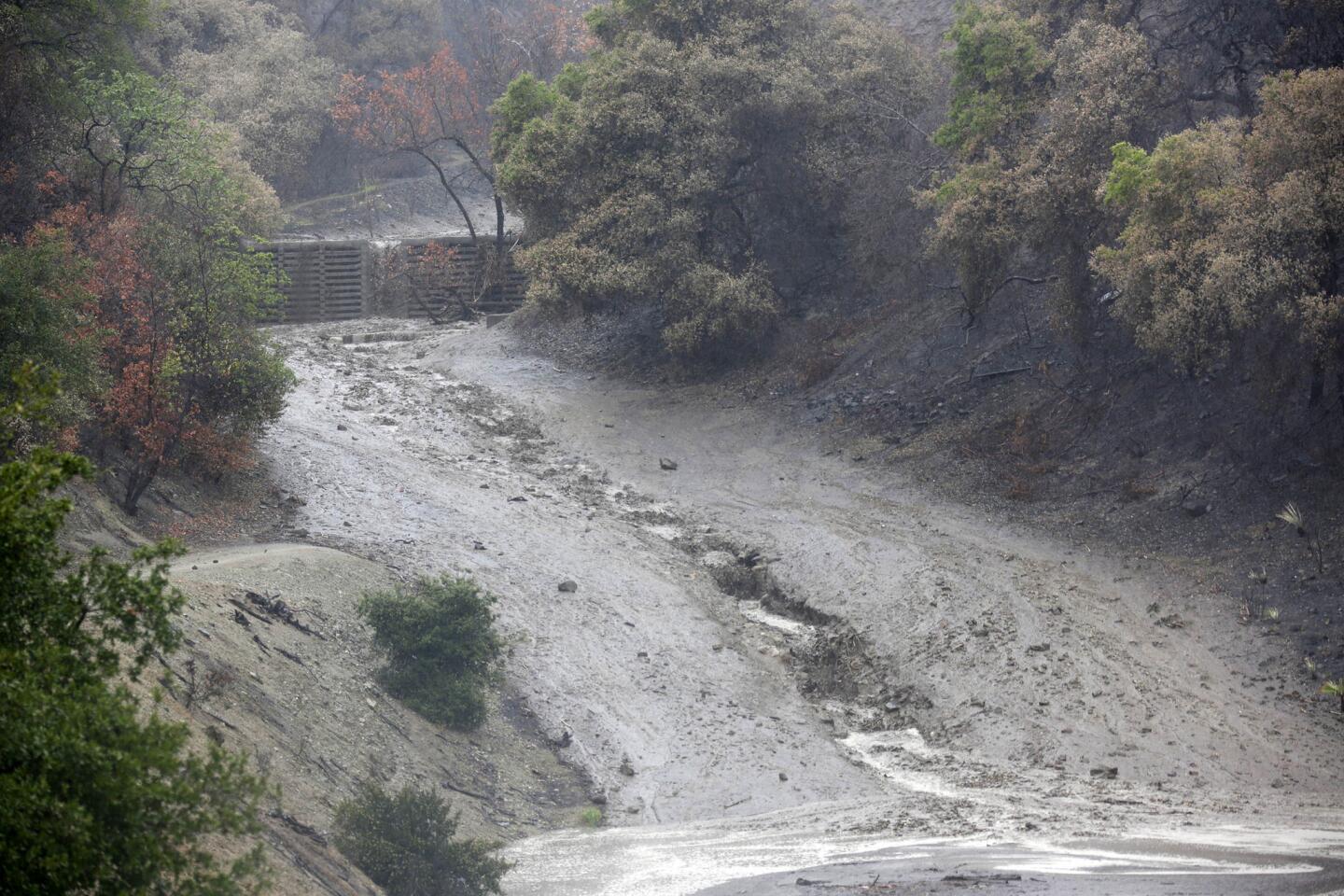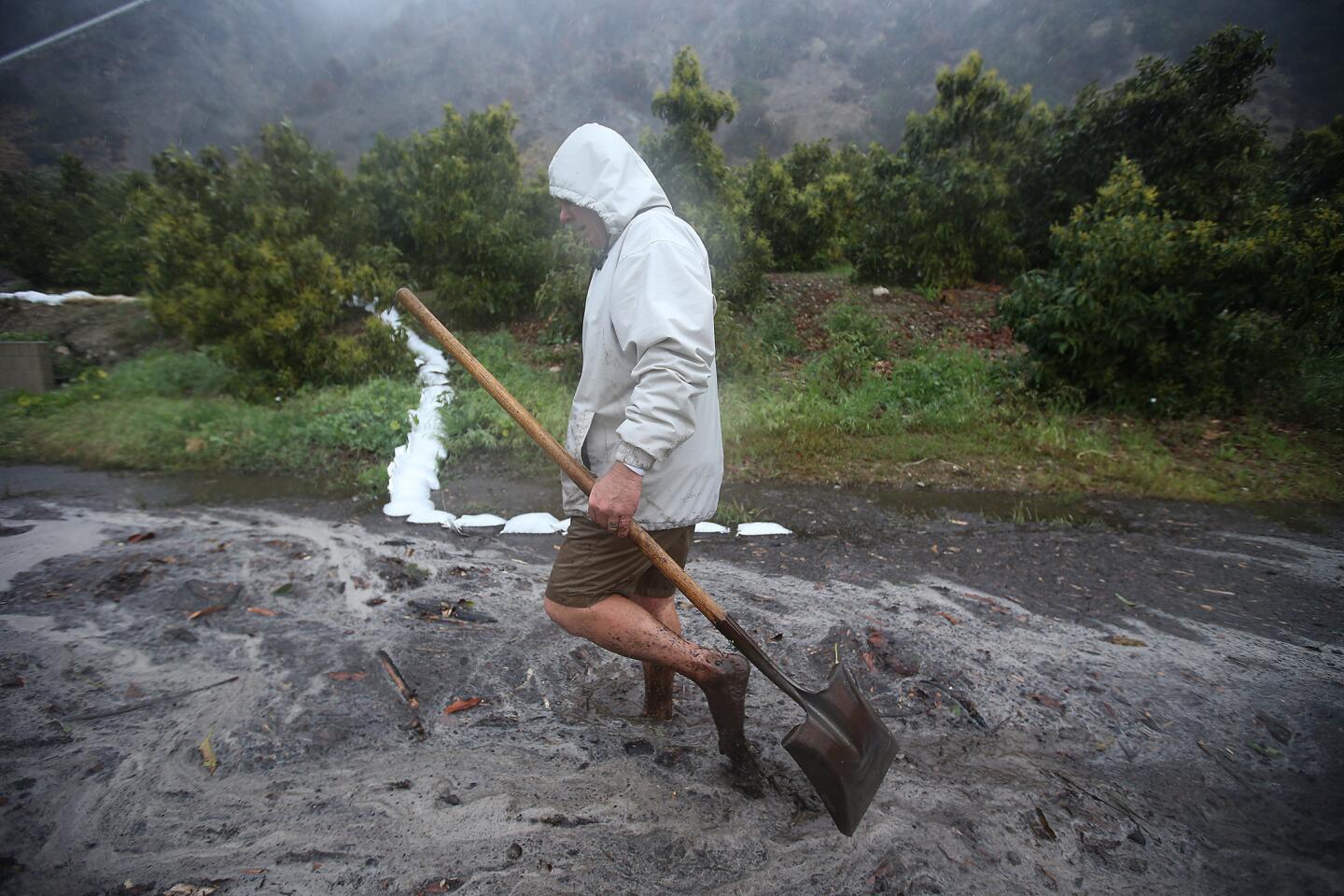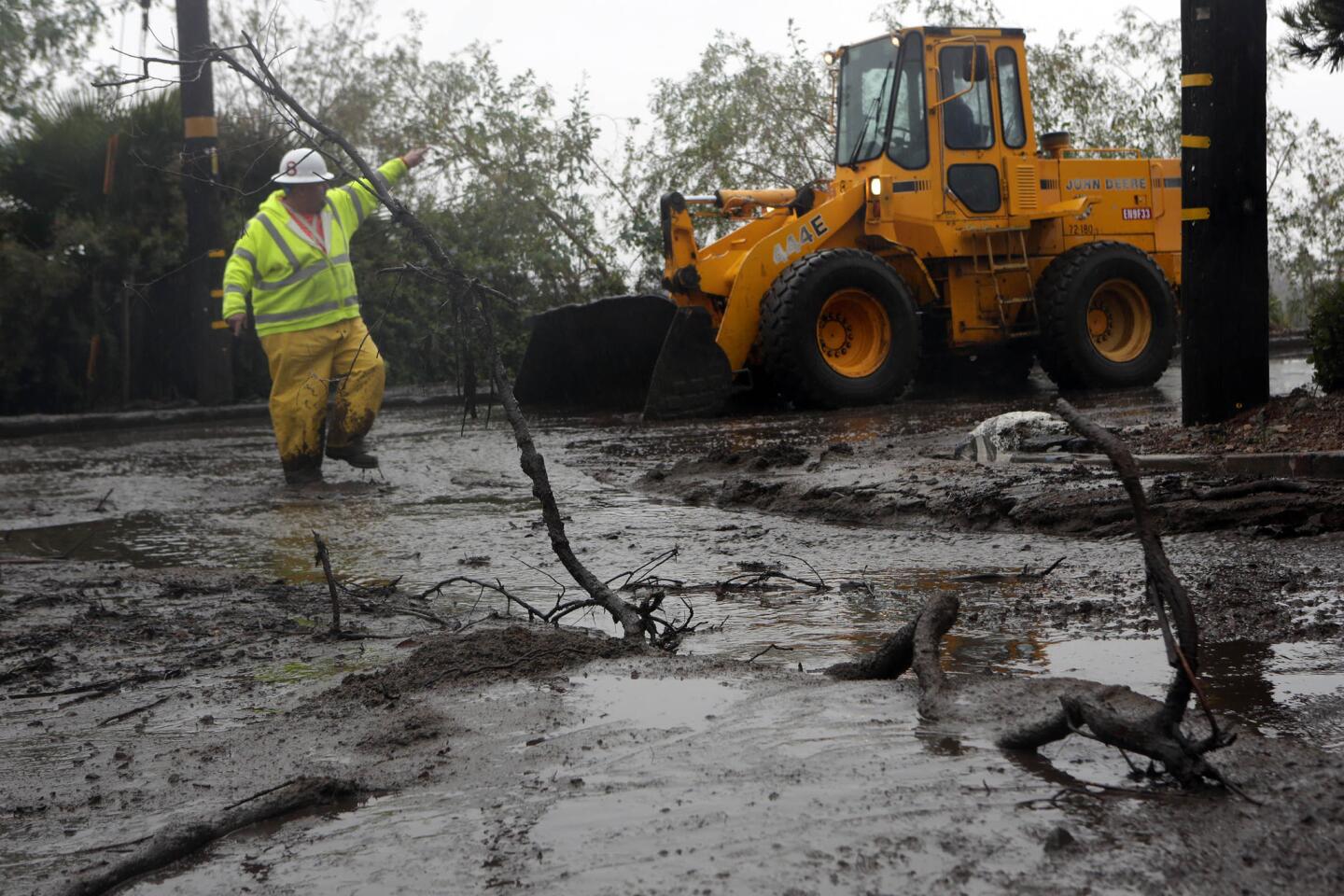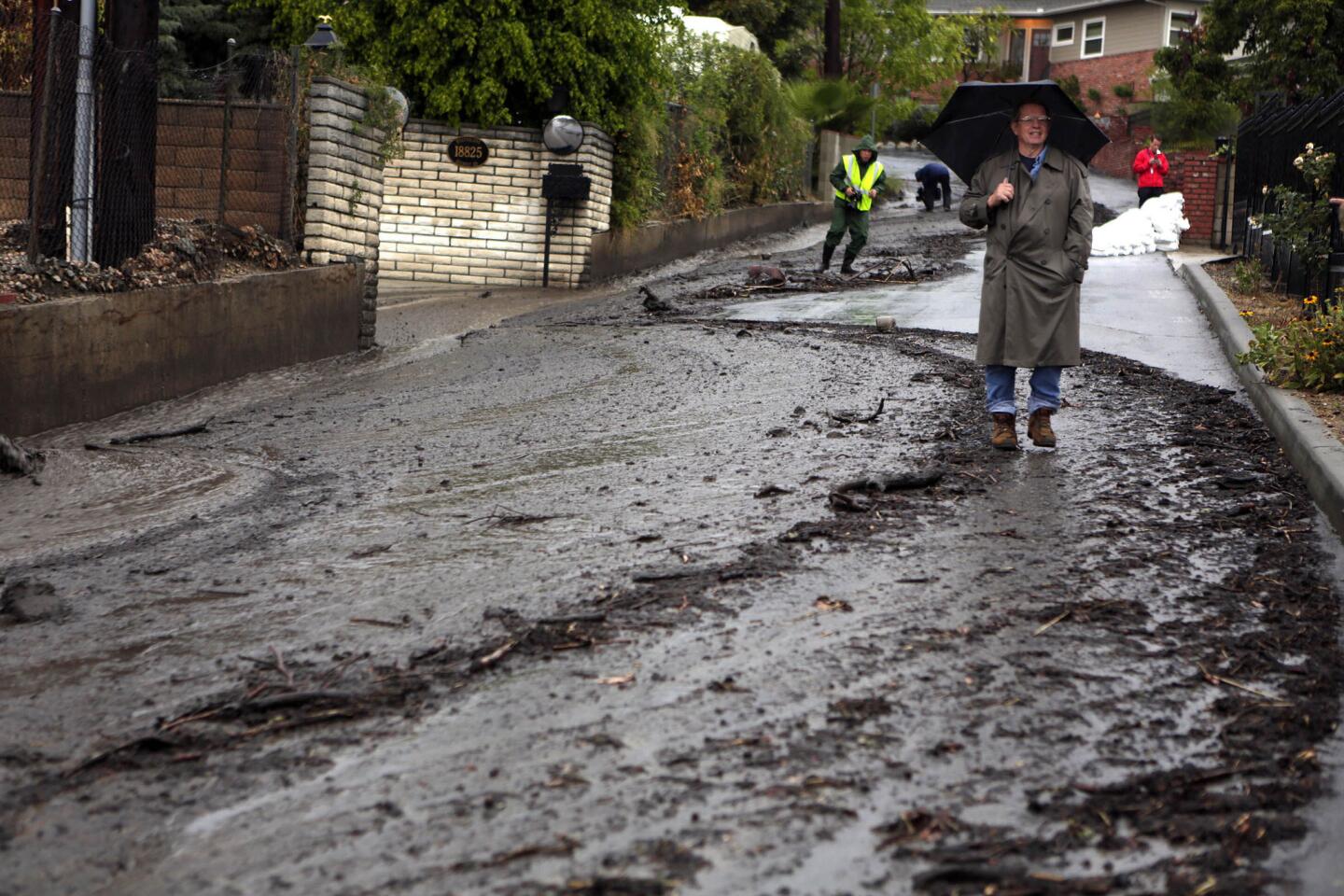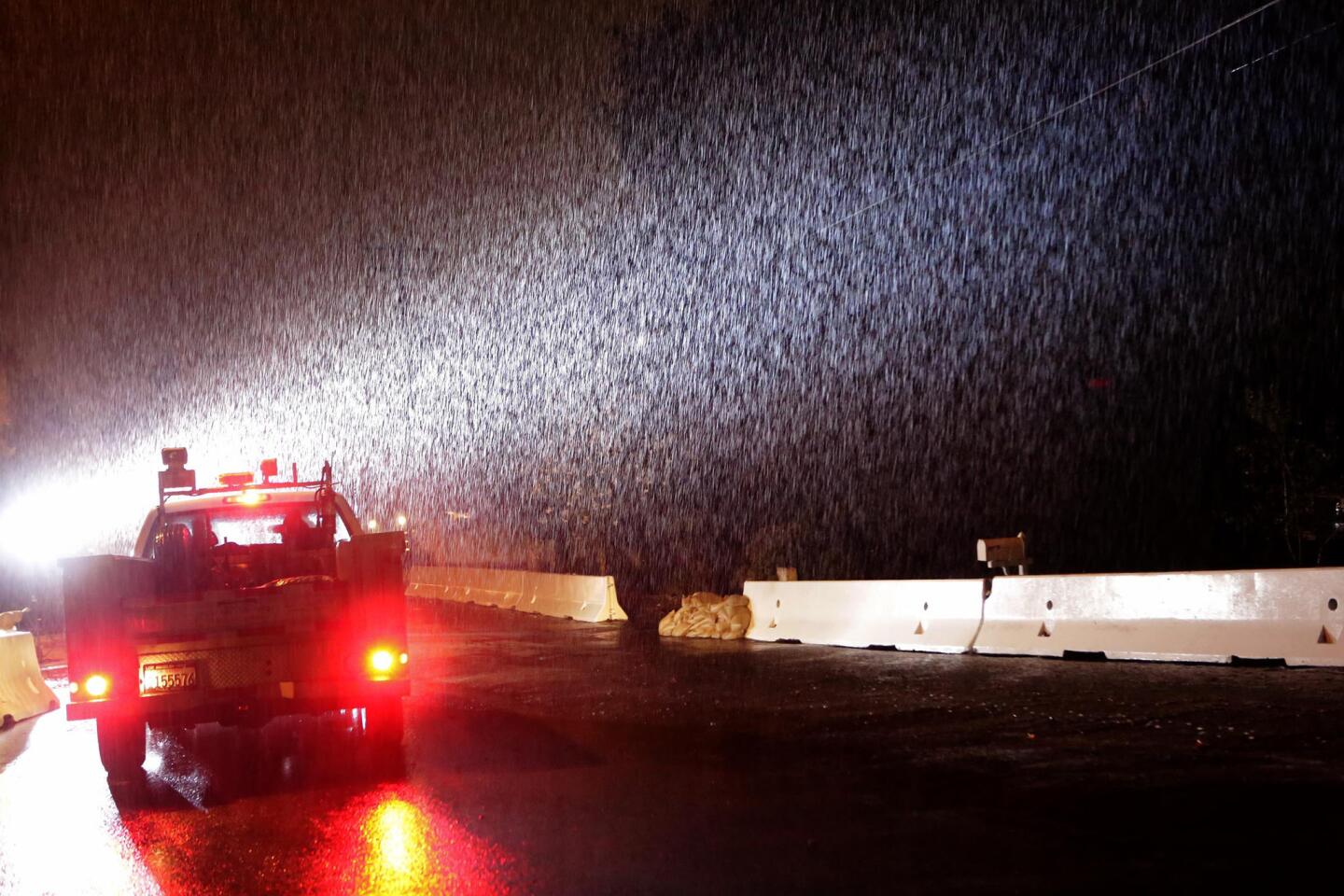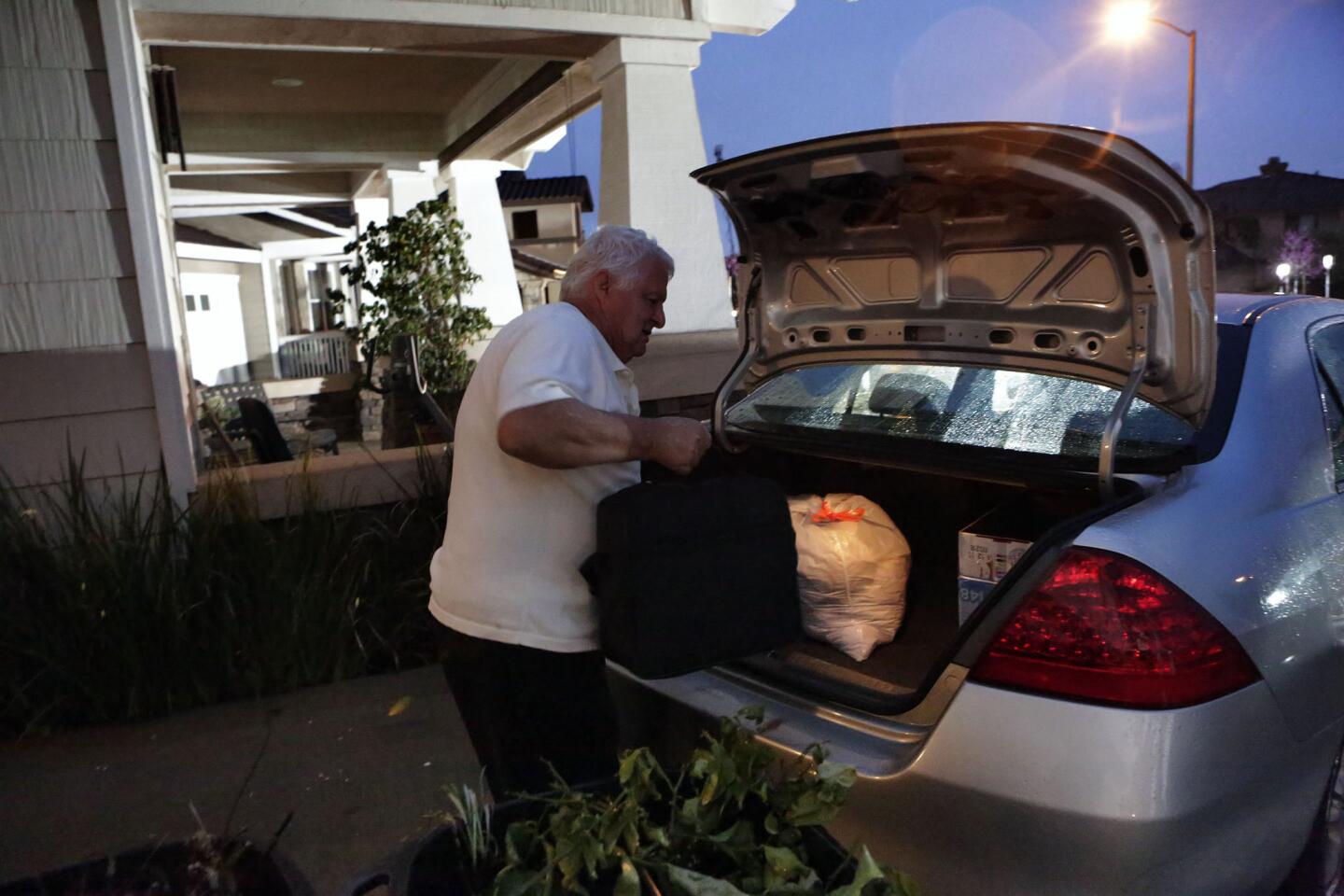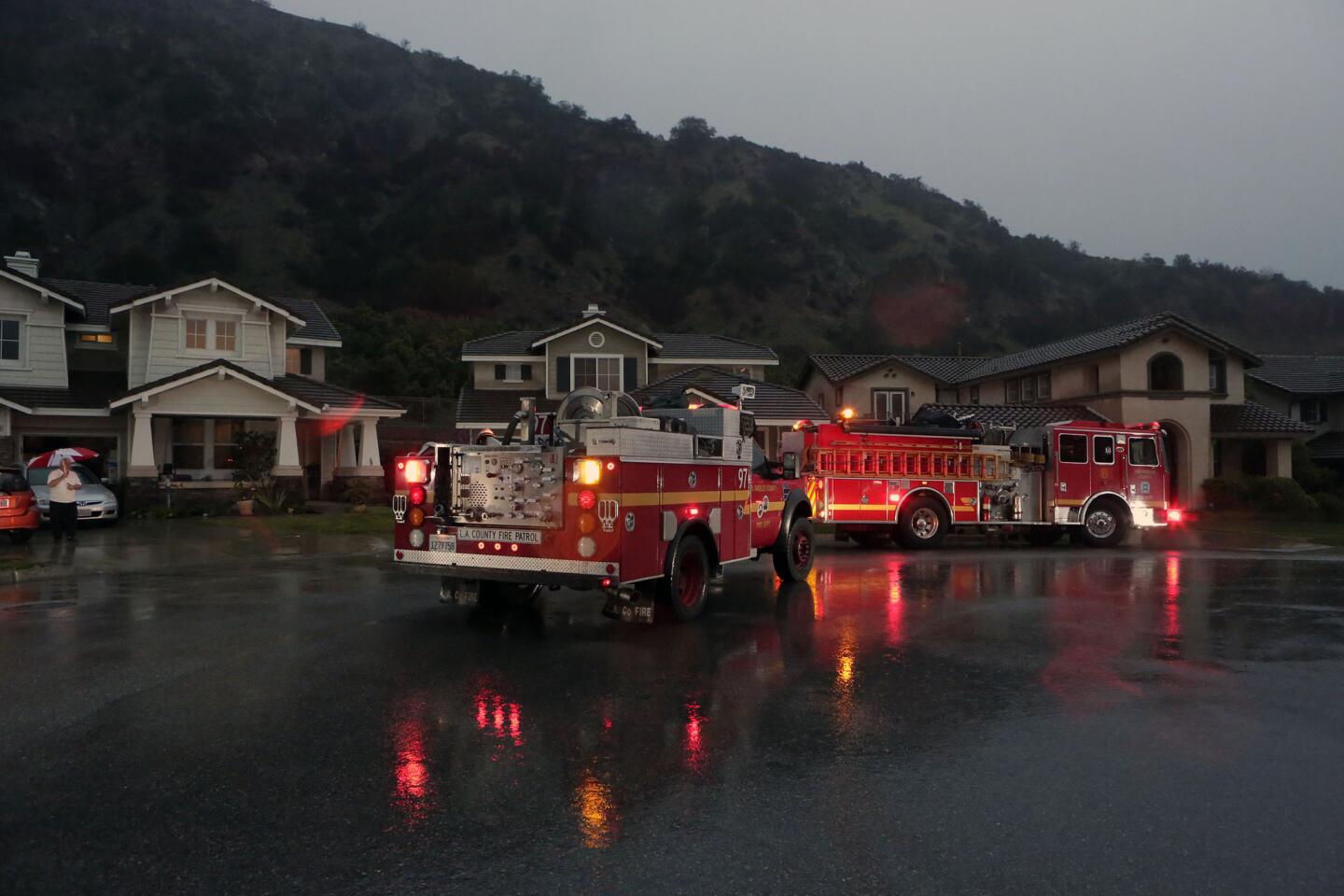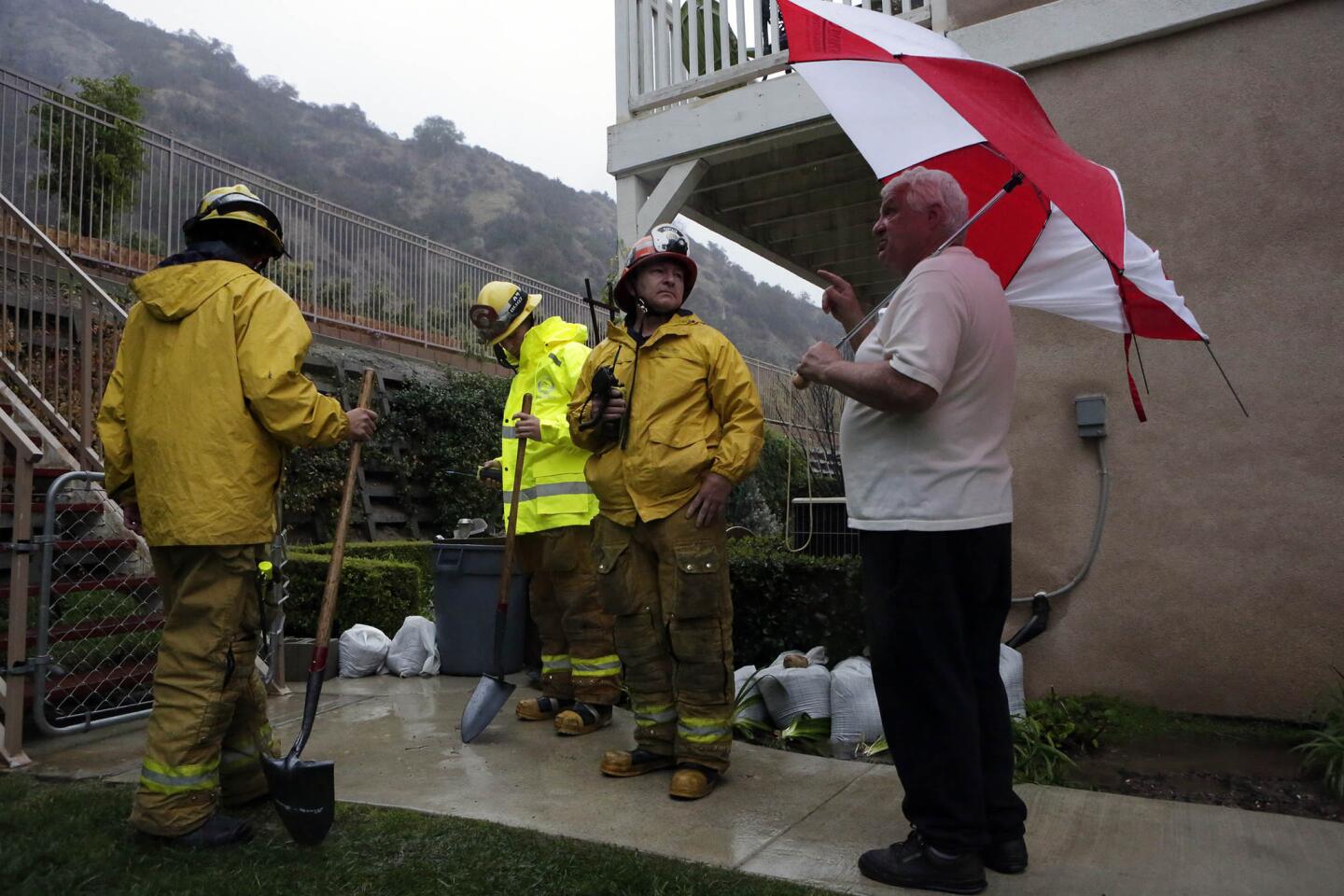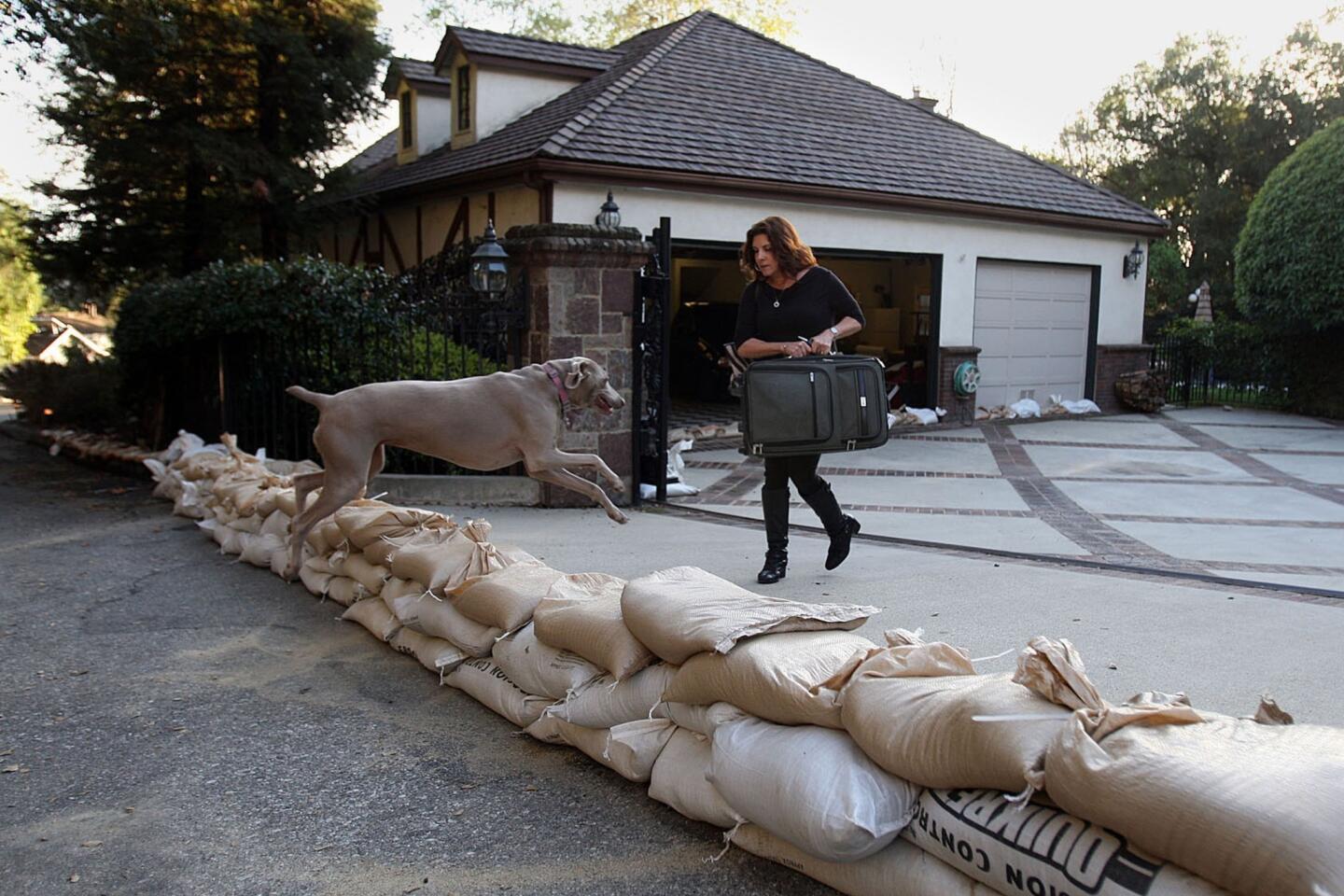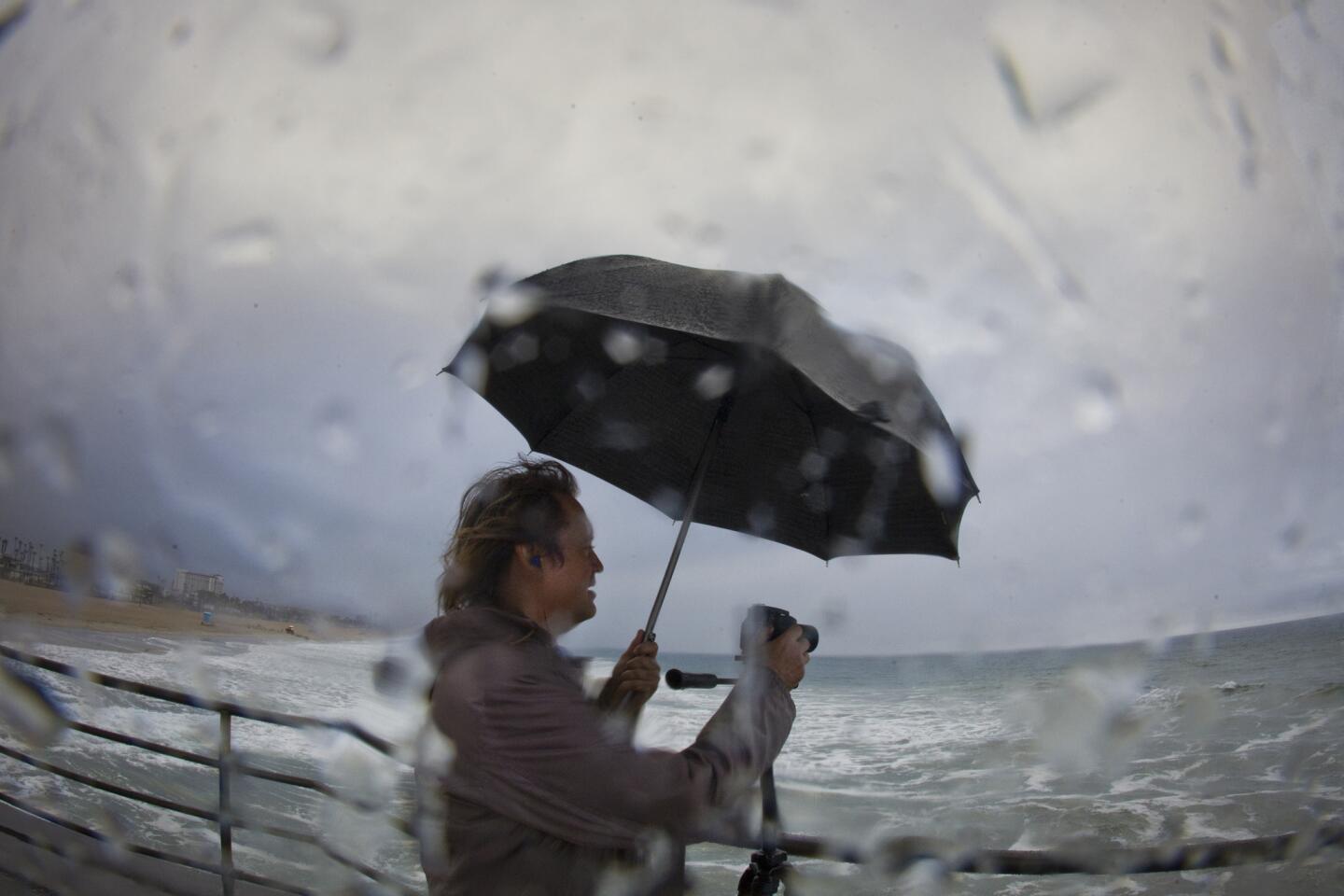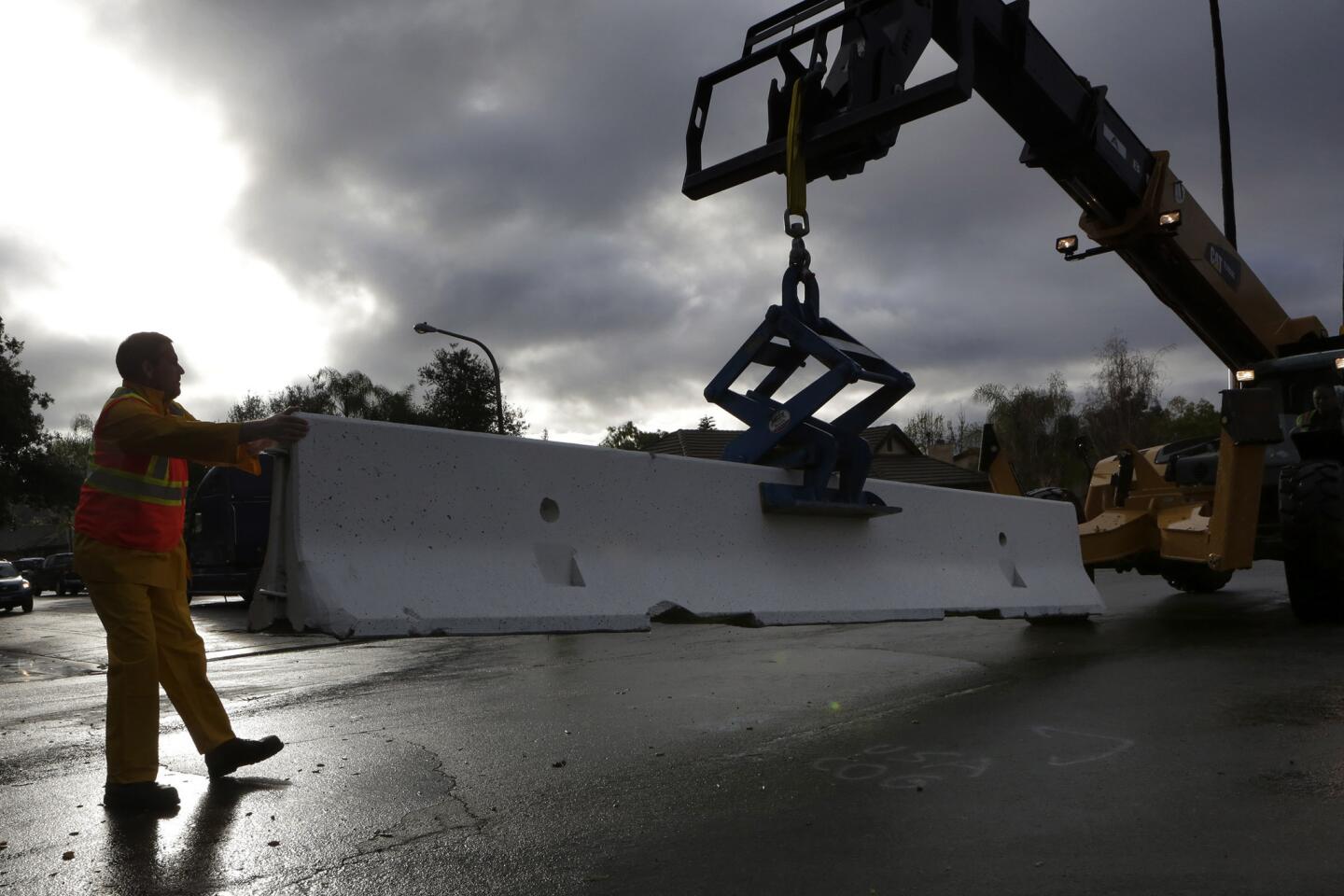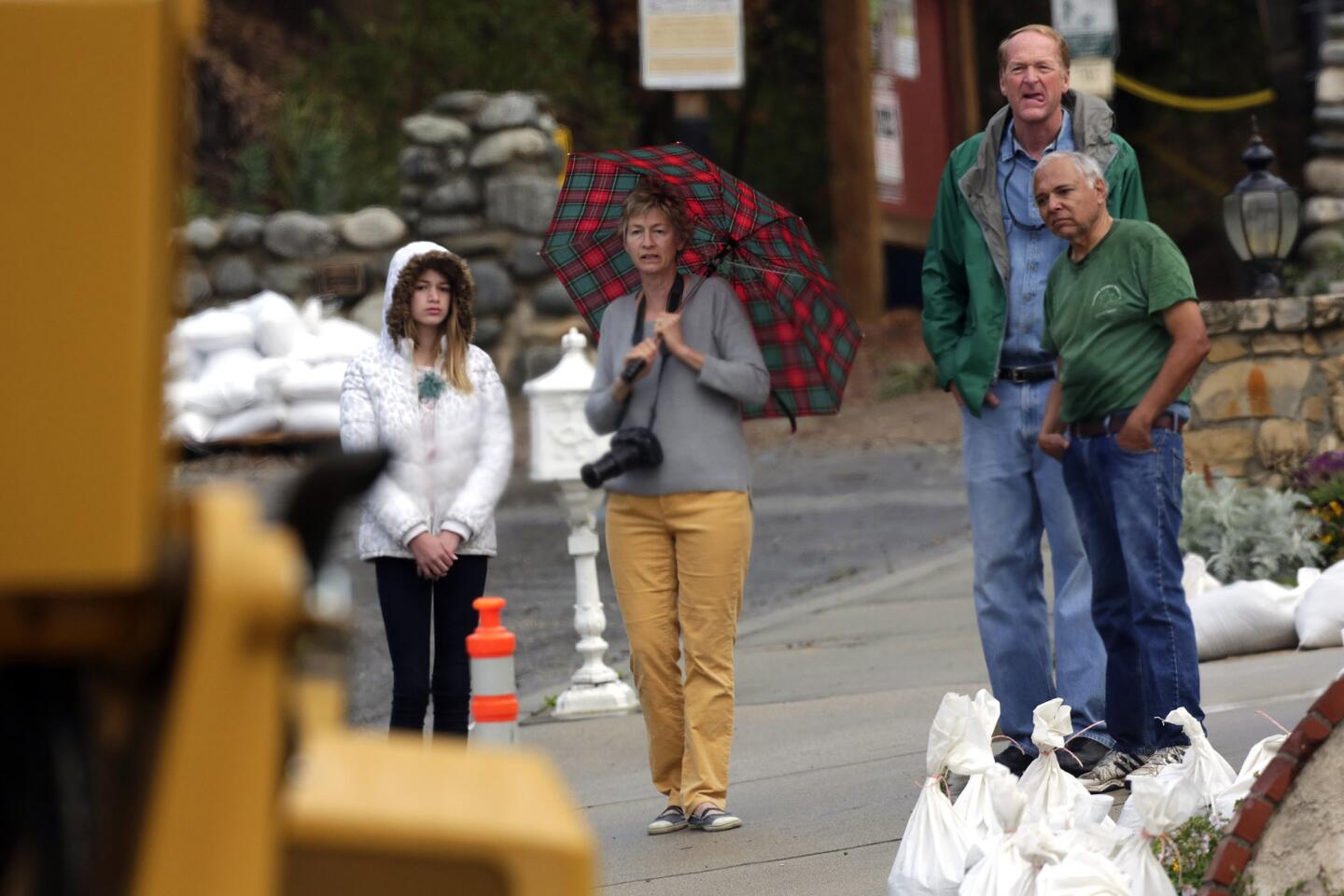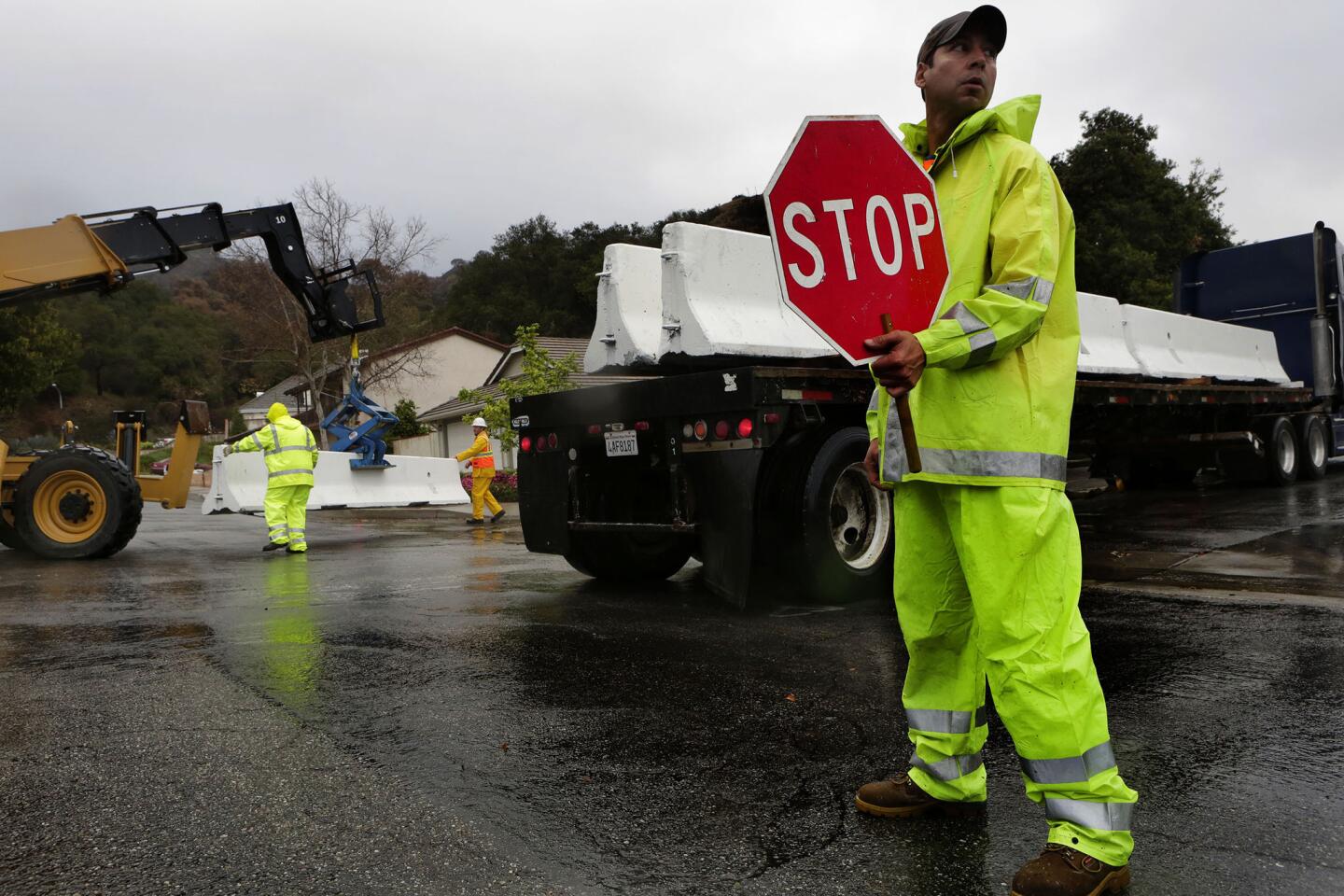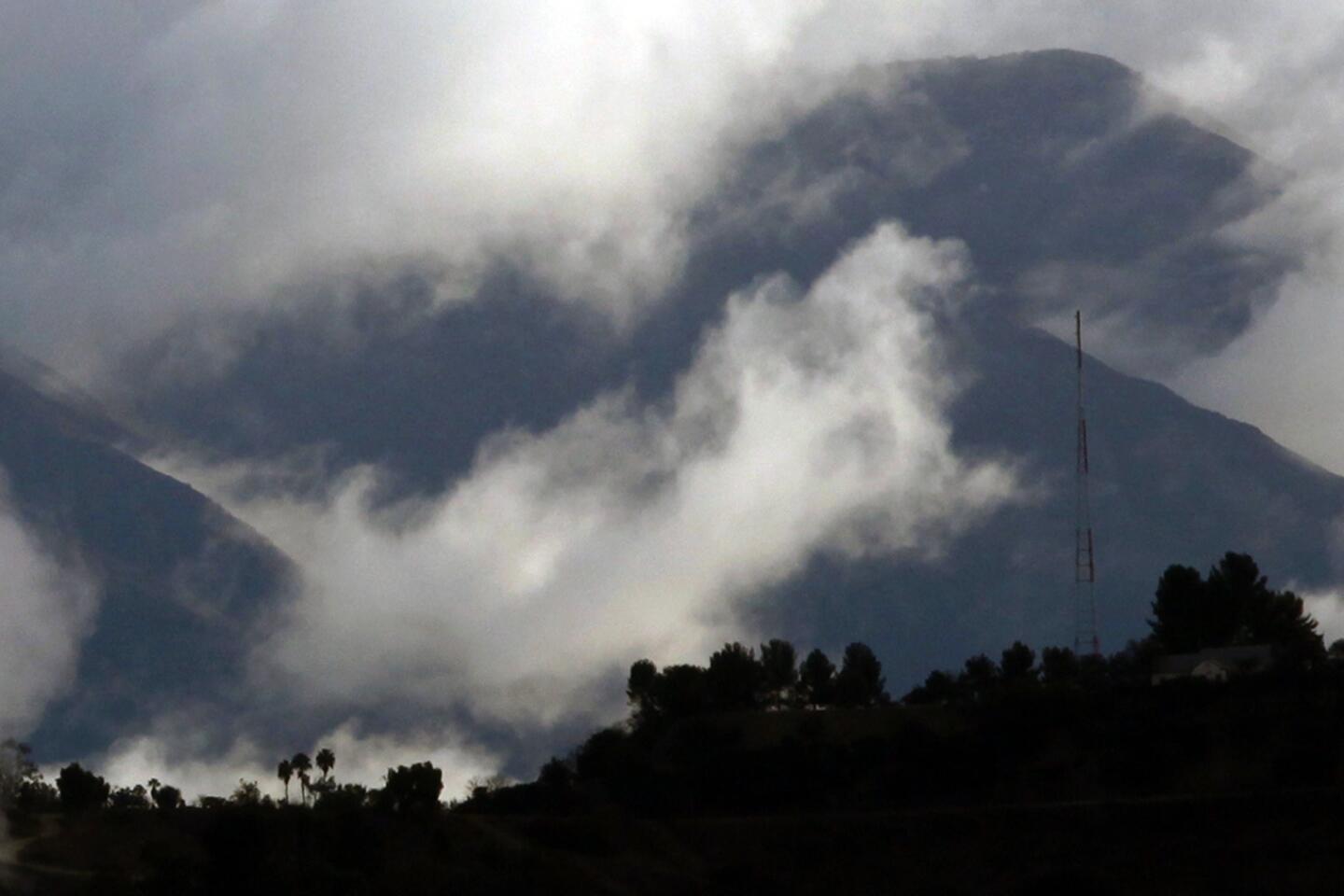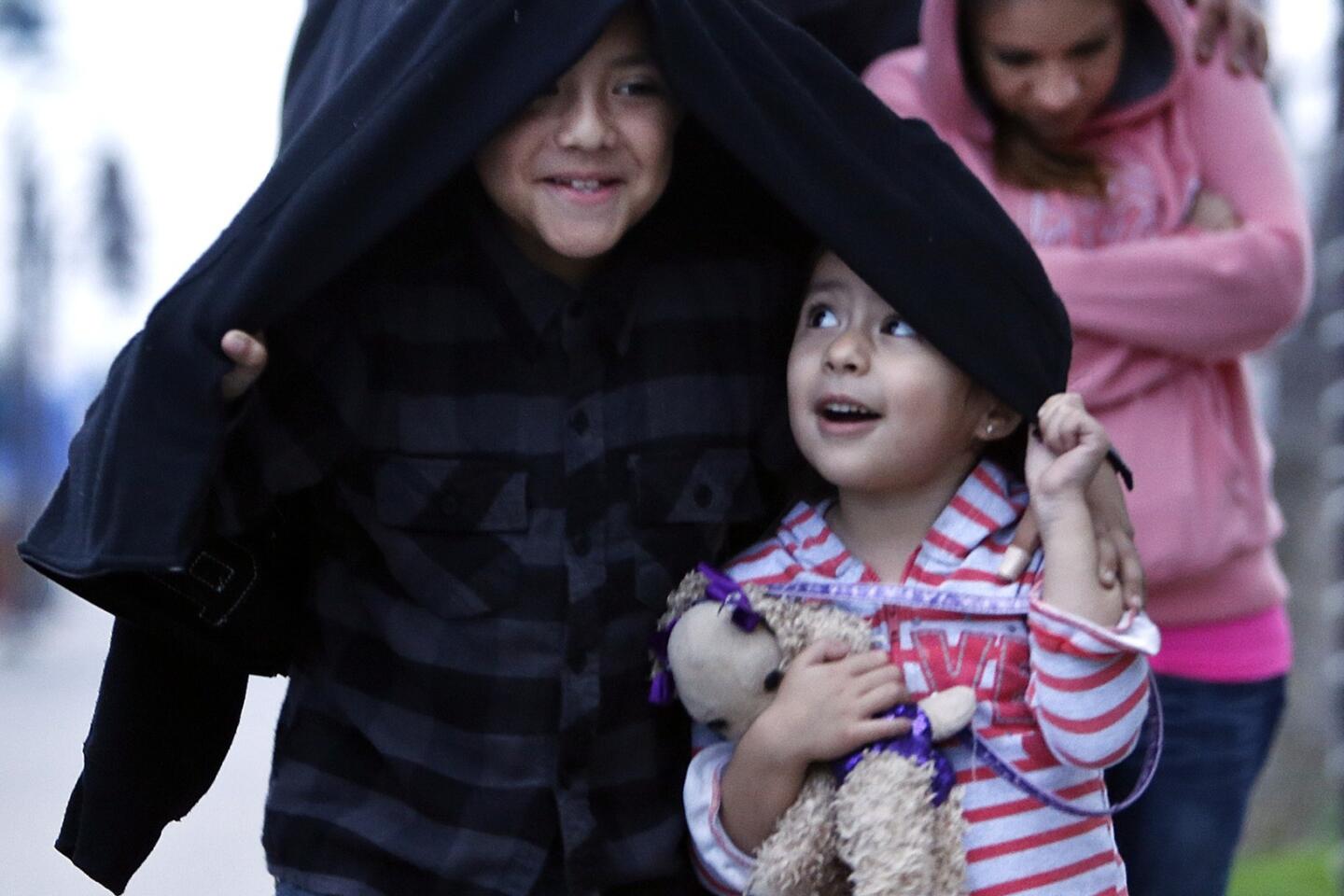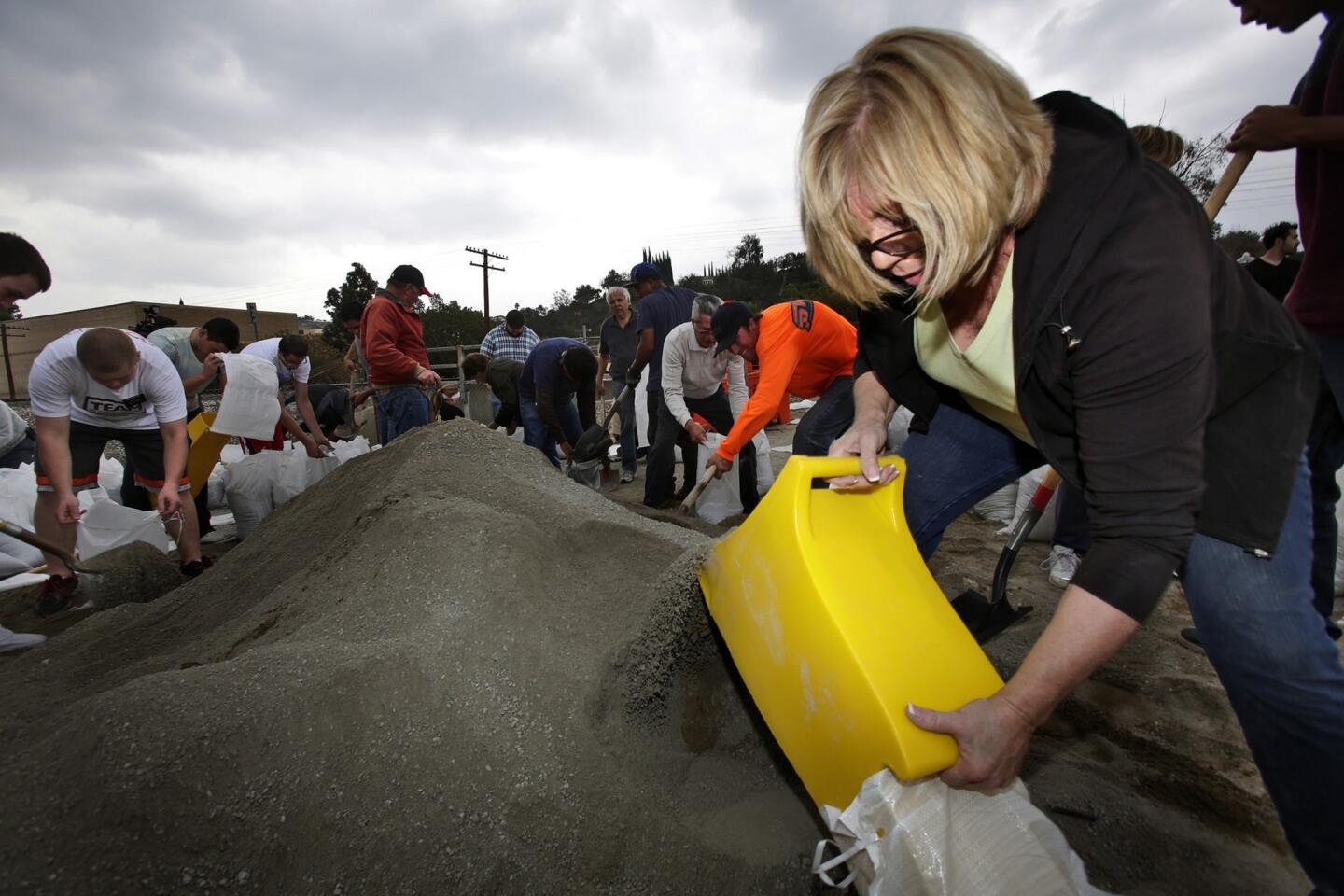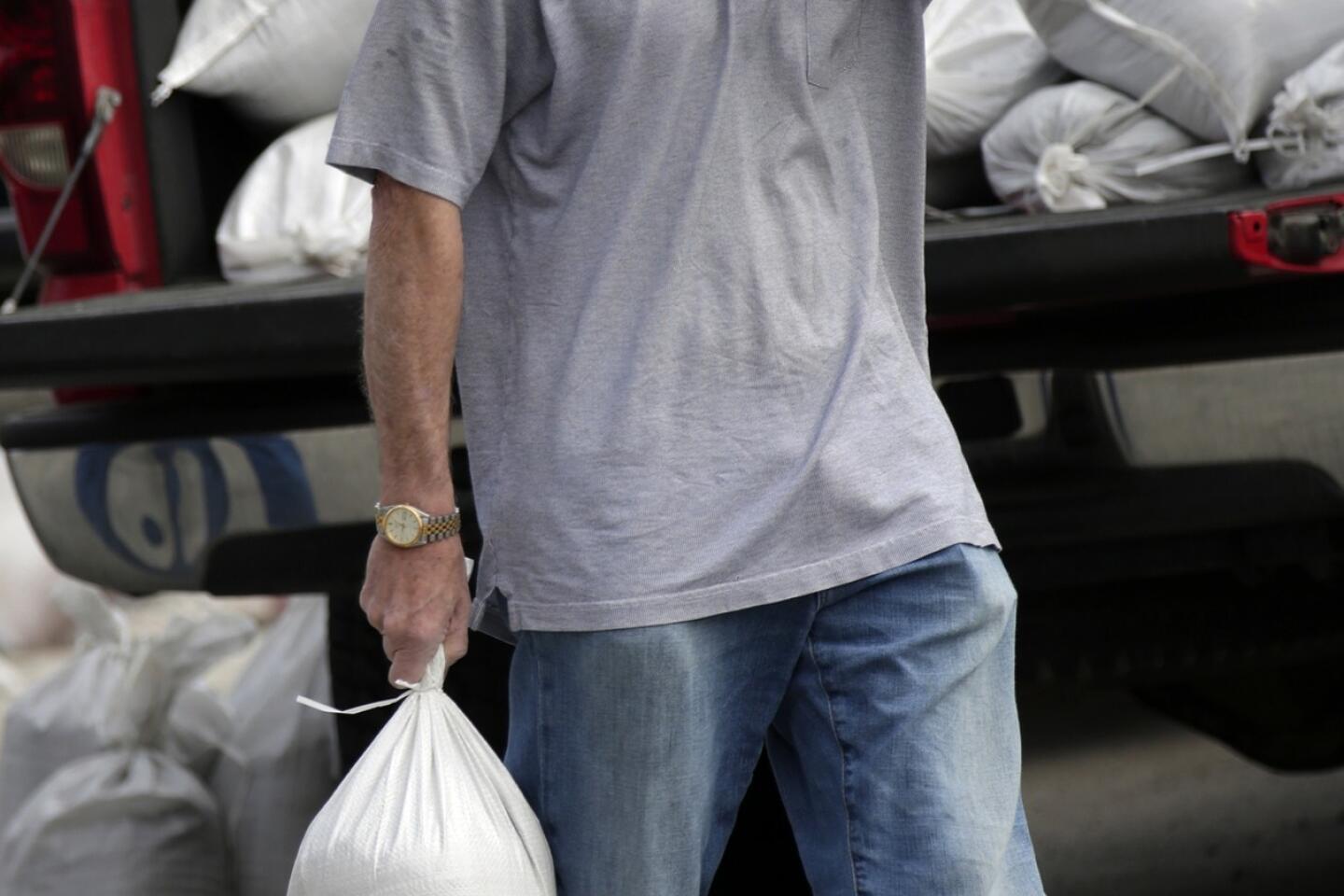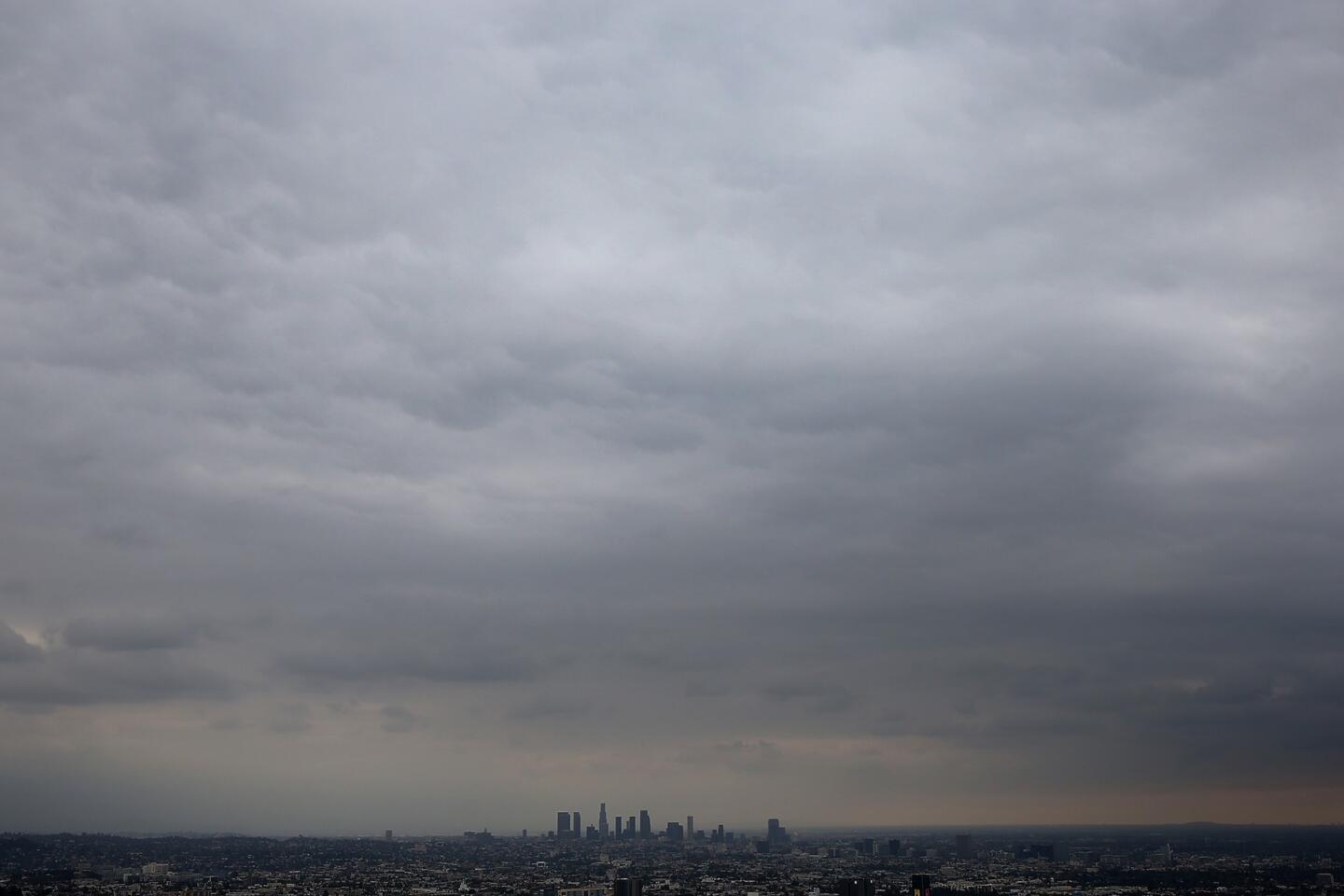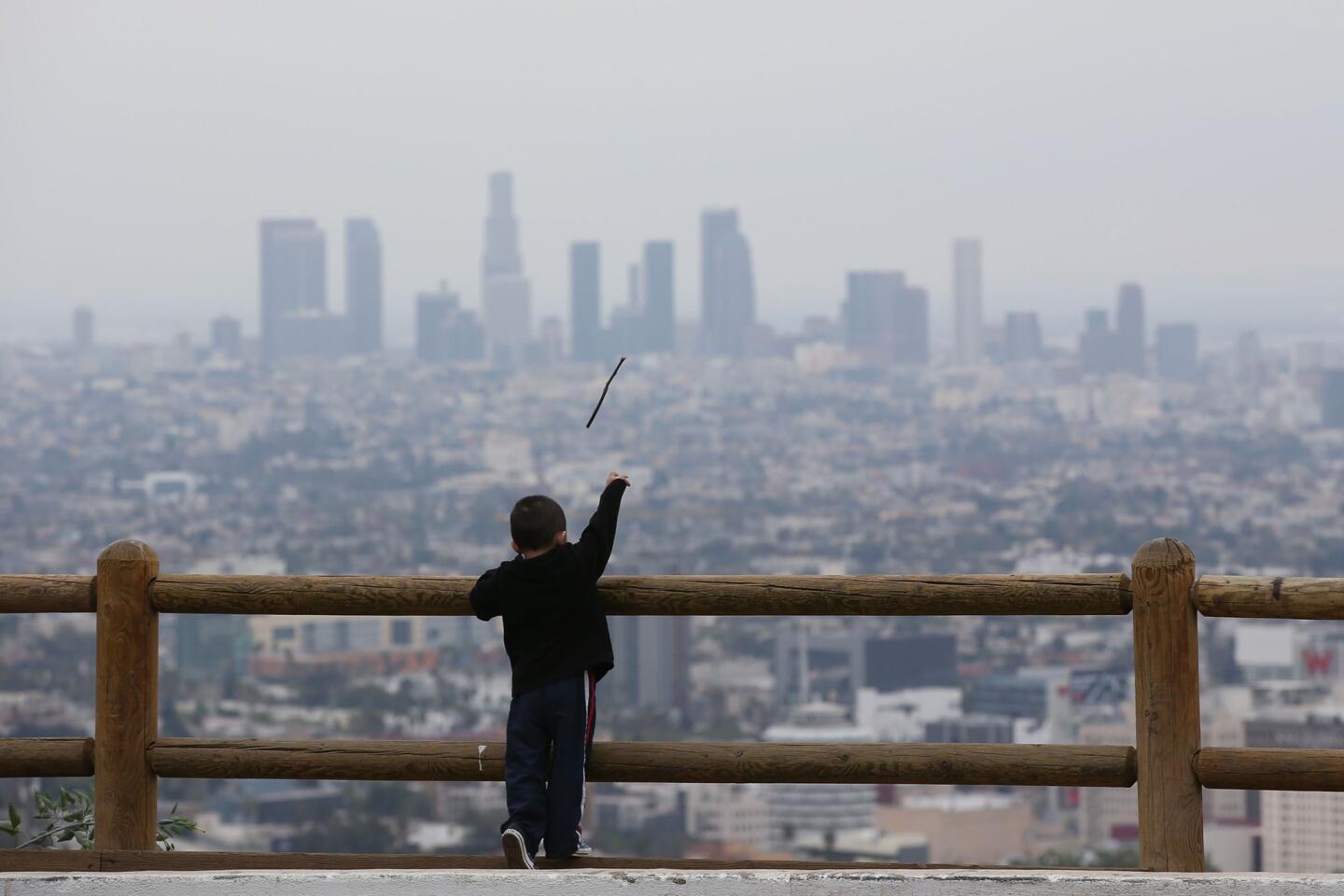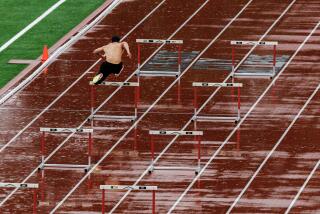Major storm brings needed rain to L.A., but at a cost
A potent storm gave Southern California a more thorough soaking on Friday than it has seen in more than three years, bringing both cheers in a drought-stricken state and anxiety as it sent mud billowing through hillside neighborhoods and clogged roads.
Downtown Los Angeles saw more rain by Friday afternoon — 1.7 inches — than it had seen during the entire rest of the “rain year,” starting last July.
For some, it was a harrowing day — for two drivers who were rescued after getting trapped by a rock slide near Malibu; for two men rescued from a downed tree in the suddenly roiling Los Angeles River; for hundreds who lost electricity when a power pole toppled over near a Long Beach police station.
Authorities recorded scores of traffic accidents, including a pileup of three tractor-trailers on Interstate 10 near Cabazon. At least 32,500 customers were without power at some point on Friday. More than 5 inches of rain had fallen in the San Gabriel Mountains, and authorities recorded a wind gust of 76 mph. Several important thoroughfares were closed, such as the Ortega Highway, which connects Riverside and Orange counties and was shut down after it became caked with mud and rocks.
The storm walloped the entire state; in San Jose, drivers abandoned vehicles in flooded streets, and near Palo Alto, a man was pulled from a raging creek near a homeless encampment and treated for hypothermia.
“And we’re not done,” said Bill Patzert, a climatologist at NASA’s Jet Propulsion Laboratory in La Cañada Flintridge. “We’ll get hit again.”
Indeed, as the meager daylight began to fade on Friday, a fresh, powerful band of rain began to lash the region anew, inundating roads that already had standing water and hillsides that were already doused.
According to the National Weather Service, a strong low-pressure storm system poised off the coast will move inland over the course of the weekend, bringing as much as 3 inches of rain to the coast and as much as 10 inches in some mountain areas. Winds, too, will be powerful; some inland portions of San Bernardino, Riverside and San Diego counties could see gusts of 65 mph or more.
Most pressingly, perhaps, the storm was by no means over for hundreds of families that had been asked to evacuate from foothill communities beneath the burn areas of nearby wildfires.
Most were in the foothill communities of Glendora and Azusa, east of Pasadena and in the shadows of the Angeles National Forest. There, an illegal campfire erupted into a 2,000-acre blaze in January, destroying five homes — and leaving thousands of homes exposed to danger beneath denuded slopes.
Percolating anxiety burst into the open at a public meeting Friday afternoon, when a sheet of rain splashed against a library in Glendora. “That’s a microburst! That’s what we don’t want!” a man yelled. “This could be bad,” another said.
Authorities, fearing that homes could be overrun and inundated with mud and debris, issued evacuation orders for about 1,000 homes, and an additional 200 homes in the nearby city of Monrovia. But in some areas, residents estimated that as many as three-quarters of homeowners had rejected the “mandatory” evacuation and elected to stay put, a decision that did not please fire and rescue officials.
“Understand this: If there is mud coming down, fire personnel cannot get to you,” warned Steve Martin of the Los Angeles County Fire Department. “There’s a reason for these evacuations.”
By nightfall Friday, authorities in the area had recorded no injuries or damage to homes. But, said Glendora Police Chief Tim Staab: “We’ve got a long way to go.”
Larry Davis, 69, whose home is perched on high ground at Sierra Madre Avenue and Hicrest Road in Glendora, was among those asked to evacuate. Davis said he figured that his high street curb and a wall surrounding his home would keep the mud flow away.
“I wasn’t worried,” he said. “I just felt we were going to be OK.... I think some 25% decided to leave. I decided to join the 75%.”
Then he opened his garage door Friday morning as he was preparing to take his grandson to school. Already, water was flowing down the road, and building up at a nearby intersection where a drainage opening was clogging up.
“I thought: ‘Uh-oh. We’re stuck,’” he said. “I thought there was going to be some flooding, but I think this turned out a lot worse than what I thought.”
By late morning, 2 feet of mud had accumulated by his house, creeping halfway up his driveway.
“I think it’s going to be OK,” he said. He knew, he said, more rain was moving in. “You can think about the inevitable. But I try not to.”
Davis was not the only homeowner in Glendora struggling to find the right balance between safety, precaution and protection of property.
Mike Schaub, 47, has survived cancer and fire — most recently, January’s Colby fire, which got to within 30 feet of his house on Cairngrove Lane and left the nearby canyon blackened and bare.
Schaub’s family calls him the “Chief Optimism Officer,” but this storm was testing that title.
Schaub, who lives with his girlfriend, his son and his girlfriend’s daughter, evacuated Thursday, leaving behind a 2-year-old German shepherd named Daisy. He used a pause in rainfall to check on Daisy, and found her with matted fur, but safe enough.
The slopes above, though, were slick with mud and starting to break apart. “It’s the hillside falling down,” he said. He surrounded the back of his house with sandbags, then left again — this time with Daisy, and unsure what he’d find the next time he came back.
He tried to take the dog to a mobile animal shelter at the Glendora evacuation center, but as he approached, holding Daisy on a purple leash, he eyed the crate in a truck where she would spend the rest of the day before being taken to a county shelter later. Then he retreated to a nearby patch of grass to think.
“I can’t do it. I can’t do it,” Schaub told the animal control officers.
“I’m probably more tormented than her,” he said later. He glanced up at the menacing sky: “Those drops are getting bigger.”
California, which has been beset by one of the worst droughts in recent history, has been desperate for rain.
Experts said the rain might make a small dent. The Sierra Nevada snowpack, which had been paltry, will likely be replenished to some degree.
“There’s no quick fix,” said Patzert, of the Jet Propulsion Laboratory. “This is a nice down payment on drought relief.”
Some rolled their eyes at all the fuss the rain brought.
“What weather?” scoffed Jerry Norek, 79, who has lived in Sunset Beach in Orange County for more than 35 years.
“We get so little weather here in Southern California. When we have a little here everyone goes bananas,” Norek said as he worked in his garage on his 1928 Ford Model-A. “It’s a lot better than nothing.”
Not everyone was buying the “silver lining” angle.
“I hate the rain,” said Alex King, 33, who moved to Sunset Beach 15 years ago from Seattle. “That’s why I live in Southern California.”
Times staff writers Ari Bloomekatz, Joseph Serna, Jason Wells, Rong-Gong Lin II, Matt Stevens and Soumya Karlamangla contributed to this report.
More to Read
Start your day right
Sign up for Essential California for news, features and recommendations from the L.A. Times and beyond in your inbox six days a week.
You may occasionally receive promotional content from the Los Angeles Times.

